
List of Nobel laureates in Physiology or Medicine
Encyclopedia

Nobel Prize in Physiology or Medicine
The Nobel Prize in Physiology or Medicine administered by the Nobel Foundation, is awarded once a year for outstanding discoveries in the field of life science and medicine. It is one of five Nobel Prizes established in 1895 by Swedish chemist Alfred Nobel, the inventor of dynamite, in his will...
is awarded annually by the Swedish Karolinska Institute
Karolinska Institutet
Karolinska institutet is a medical university in Solna within the Stockholm urban area, Sweden, and one of Europe's largest medical universities...
to scientists and doctors in the various fields of physiology
Physiology
Physiology is the science of the function of living systems. This includes how organisms, organ systems, organs, cells, and bio-molecules carry out the chemical or physical functions that exist in a living system. The highest honor awarded in physiology is the Nobel Prize in Physiology or...
or medicine
Medicine
Medicine is the science and art of healing. It encompasses a variety of health care practices evolved to maintain and restore health by the prevention and treatment of illness....
. It is one of the five Nobel Prize
Nobel Prize
The Nobel Prizes are annual international awards bestowed by Scandinavian committees in recognition of cultural and scientific advances. The will of the Swedish chemist Alfred Nobel, the inventor of dynamite, established the prizes in 1895...
s established by the 1895 will
Will (law)
A will or testament is a legal declaration by which a person, the testator, names one or more persons to manage his/her estate and provides for the transfer of his/her property at death...
of Alfred Nobel
Alfred Nobel
Alfred Bernhard Nobel was a Swedish chemist, engineer, innovator, and armaments manufacturer. He is the inventor of dynamite. Nobel also owned Bofors, which he had redirected from its previous role as primarily an iron and steel producer to a major manufacturer of cannon and other armaments...
(who died in 1896), awarded for outstanding contributions in chemistry
Nobel Prize in Chemistry
The Nobel Prize in Chemistry is awarded annually by the Royal Swedish Academy of Sciences to scientists in the various fields of chemistry. It is one of the five Nobel Prizes established by the will of Alfred Nobel in 1895, awarded for outstanding contributions in chemistry, physics, literature,...
, physics
Nobel Prize in Physics
The Nobel Prize in Physics is awarded once a year by the Royal Swedish Academy of Sciences. It is one of the five Nobel Prizes established by the will of Alfred Nobel in 1895 and awarded since 1901; the others are the Nobel Prize in Chemistry, Nobel Prize in Literature, Nobel Peace Prize, and...
, literature
Nobel Prize in Literature
Since 1901, the Nobel Prize in Literature has been awarded annually to an author from any country who has, in the words from the will of Alfred Nobel, produced "in the field of literature the most outstanding work in an ideal direction"...
, peace
Nobel Peace Prize
The Nobel Peace Prize is one of the five Nobel Prizes bequeathed by the Swedish industrialist and inventor Alfred Nobel.-Background:According to Nobel's will, the Peace Prize shall be awarded to the person who...
, and physiology or medicine. As dictated by Nobel's will, the award is administered by the Nobel Foundation
Nobel Foundation
The Nobel Foundation is a private institution founded on 29 June 1900 to manage the finances and administration of the Nobel Prizes. The Foundation is based on the last will of Alfred Nobel, the inventor of dynamite....
and awarded by a committee that consists of five members and an executive secretary elected by the Karolinska Institute. While commonly referred to as the Nobel Prize in Medicine, Nobel specifically stated that the prize be awarded for "physiology or medicine" in his will. Because of this, the prize can be awarded in a broader range of fields. The first Nobel Prize in Physiology or Medicine was awarded in 1901 to Emil Adolf von Behring
Emil Adolf von Behring
Emil Adolf von Behring was a German physiologist who received the 1901 Nobel Prize in Physiology or Medicine, the first one so awarded.-Biography:...
, of Germany. Each recipient receives a medal, a diploma and a monetary award that has varied throughout the years. In 1901, von Behring received 150,782 SEK
Swedish krona
The krona has been the currency of Sweden since 1873. Both the ISO code "SEK" and currency sign "kr" are in common use; the former precedes or follows the value, the latter usually follows it, but especially in the past, it sometimes preceded the value...
, which is equal to 7,731,004 SEK in December 2008. In 2008, the prize was awarded to Harald zur Hausen
Harald zur Hausen
Harald zur Hausen is a German virologist and professor emeritus. He has done research on cancer of the cervix, where he discovered the role of papilloma viruses, for which he received the Nobel Prize in Physiology or Medicine 2008.-Biography:Zur Hausen was born in Gelsenkirchen, Germany, went to...
, Françoise Barré-Sinoussi
Françoise Barré-Sinoussi
Françoise Barré-Sinoussi is a French virologist and director of the Unité de Régulation des Infections Rétrovirales at the Institut Pasteur in Paris, France. Born in Paris, France, Barré-Sinoussi performed some of the fundamental work in the identification of the human immunodeficiency virus as...
and Luc Montagnier
Luc Montagnier
Luc Antoine Montagnier is a French virologist and joint recipient with Françoise Barré-Sinoussi and Harald zur Hausen of the 2008 Nobel Prize in Physiology or Medicine, for his discovery of the human immunodeficiency virus...
, who shared the prize amount of 10,000,000 SEK (slightly more than €
Euro
The euro is the official currency of the eurozone: 17 of the 27 member states of the European Union. It is also the currency used by the Institutions of the European Union. The eurozone consists of Austria, Belgium, Cyprus, Estonia, Finland, France, Germany, Greece, Ireland, Italy, Luxembourg,...
1 million, or US$
United States dollar
The United States dollar , also referred to as the American dollar, is the official currency of the United States of America. It is divided into 100 smaller units called cents or pennies....
1.4 million). The award is presented in Stockholm
Stockholm
Stockholm is the capital and the largest city of Sweden and constitutes the most populated urban area in Scandinavia. Stockholm is the most populous city in Sweden, with a population of 851,155 in the municipality , 1.37 million in the urban area , and around 2.1 million in the metropolitan area...
at an annual ceremony on December 10, the anniversary of Nobel's death.
Laureates have won the Nobel Prize in a wide range of fields that relate to physiology or medicine. As of 2009, 8 Prizes have been awarded for contributions in the field of signal transduction by G proteins and second messengers, 13 have been awarded for contributions in the field of neurobiology and 13 have been awarded for contributions in Intermediary Metabolism
Metabolism
Metabolism is the set of chemical reactions that happen in the cells of living organisms to sustain life. These processes allow organisms to grow and reproduce, maintain their structures, and respond to their environments. Metabolism is usually divided into two categories...
. Gerhard Domagk (1939), a German, was not allowed by his government to accept the prize. He later received a medal and diploma, but not the money. Ten women have won the prize: Gerty Cori
Gerty Cori
Gerty Theresa Cori was an American biochemist who became the third woman—and first American woman—to win a Nobel Prize in science, and the first woman to be awarded the Nobel Prize in Physiology or Medicine.Cori was born in Prague...
(1947), Rosalyn Yalow
Rosalyn Sussman Yalow
Rosalyn Sussman Yalow was an American medical physicist, and a co-winner of the 1977 Nobel Prize in Physiology or Medicine for development of the radioimmunoassay technique...
(1977), Barbara McClintock
Barbara McClintock
Barbara McClintock , the 1983 Nobel Laureate in Physiology or Medicine, was an American scientist and one of the world's most distinguished cytogeneticists. McClintock received her PhD in botany from Cornell University in 1927, where she was a leader in the development of maize cytogenetics...
(1983), Rita Levi-Montalcini
Rita Levi-Montalcini
Rita Levi-Montalcini , Knight Grand Cross is an Italian neurologist who, together with colleague Stanley Cohen, received the 1986 Nobel Prize in Physiology or Medicine for their discovery of nerve growth factor...
(1986), Gertrude B. Elion (1988), Christiane Nüsslein-Volhard
Christiane Nüsslein-Volhard
Christiane Nüsslein-Volhard is a German biologist who won the Albert Lasker Award for Basic Medical Research in 1991 and the Nobel Prize in Physiology or Medicine in 1995, together with Eric Wieschaus and Edward B...
(1995), Linda B. Buck
Linda B. Buck
Linda Brown Buck is an American biologist best known for her work on the olfactory system. She was awarded the 2004 Nobel Prize in Physiology or Medicine, along with Richard Axel, for their work on olfactory receptors....
(2004), Françoise Barré-Sinoussi
Françoise Barré-Sinoussi
Françoise Barré-Sinoussi is a French virologist and director of the Unité de Régulation des Infections Rétrovirales at the Institut Pasteur in Paris, France. Born in Paris, France, Barré-Sinoussi performed some of the fundamental work in the identification of the human immunodeficiency virus as...
(2008), Elizabeth H. Blackburn (2009) and Carol W. Greider
Carol W. Greider
Carolyn Widney "Carol" Greider is an American molecular biologist. She is Daniel Nathans Professor and Director of Molecular Biology and Genetics at Johns Hopkins University. She discovered the enzyme telomerase in 1984, when she was a graduate student of Elizabeth Blackburn at the University of...
(2009). As of 2011, the prize has been awarded to 199 individuals. There have been nine years in which the Nobel Prize in Physiology or Medicine was not awarded (1915–1918, 1921, 1925, 1940–1942).
Laureates
| Year | Laureate | |||
|---|---|---|---|---|
| 1901 |  |
Emil Adolf von Behring Emil Adolf von Behring Emil Adolf von Behring was a German physiologist who received the 1901 Nobel Prize in Physiology or Medicine, the first one so awarded.-Biography:... |
Germany Germany Germany , officially the Federal Republic of Germany , is a federal parliamentary republic in Europe. The country consists of 16 states while the capital and largest city is Berlin. Germany covers an area of 357,021 km2 and has a largely temperate seasonal climate... |
"for his work on serum Blood plasma Blood plasma is the straw-colored liquid component of blood in which the blood cells in whole blood are normally suspended. It makes up about 55% of the total blood volume. It is the intravascular fluid part of extracellular fluid... therapy, especially its application against diphtheria Diphtheria Diphtheria is an upper respiratory tract illness caused by Corynebacterium diphtheriae, a facultative anaerobic, Gram-positive bacterium. It is characterized by sore throat, low fever, and an adherent membrane on the tonsils, pharynx, and/or nasal cavity... , by which he has opened a new road in the domain of medical science and thereby placed in the hands of the physician a victorious weapon against illness and deaths" |
| 1902 |  |
Sir Ronald Ross Ronald Ross Sir Ronald Ross KCB FRS was a British doctor who received the Nobel Prize for Physiology or Medicine in 1902 for his work on malaria. He was the first Indian-born person to win a Nobel Prize... |
United Kingdom United Kingdom The United Kingdom of Great Britain and Northern IrelandIn the United Kingdom and Dependencies, other languages have been officially recognised as legitimate autochthonous languages under the European Charter for Regional or Minority Languages... |
"for his work on malaria Malaria Malaria is a mosquito-borne infectious disease of humans and other animals caused by eukaryotic protists of the genus Plasmodium. The disease results from the multiplication of Plasmodium parasites within red blood cells, causing symptoms that typically include fever and headache, in severe cases... , by which he has shown how it enters the organism and thereby has laid the foundation for successful research on this disease and methods of combating it" |
| 1903 |  |
Niels Ryberg Finsen Niels Ryberg Finsen Niels Ryberg Finsen was a Faroese-Danish physician and scientist of Icelandic descent. He was awarded the Nobel Prize in Medicine and Physiology in 1903 "in recognition of his contribution to the treatment of diseases, especially lupus vulgaris, with concentrated light radiation, whereby he has... |
Denmark Denmark Denmark is a Scandinavian country in Northern Europe. The countries of Denmark and Greenland, as well as the Faroe Islands, constitute the Kingdom of Denmark . It is the southernmost of the Nordic countries, southwest of Sweden and south of Norway, and bordered to the south by Germany. Denmark... (Faroe Islands Faroe Islands The Faroe Islands are an island group situated between the Norwegian Sea and the North Atlantic Ocean, approximately halfway between Scotland and Iceland. The Faroe Islands are a self-governing territory within the Kingdom of Denmark, along with Denmark proper and Greenland... ) |
"[for] his contribution to the treatment of diseases, especially lupus vulgaris Lupus vulgaris Lupus vulgaris are painful cutaneous tuberculosis skin lesions with nodular appearance, most often on the face around nose, eyelids, lips, cheeks and ears. The lesions may ultimately develop into disfiguring skin ulcers if left untreated... , with concentrated light radiation, whereby he has opened a new avenue for medical science" |
| 1904 | .png) |
Ivan Petrovich Pavlov | Russia Russia Russia or , officially known as both Russia and the Russian Federation , is a country in northern Eurasia. It is a federal semi-presidential republic, comprising 83 federal subjects... |
"in recognition of his work on the physiology of digestion, through which knowledge on vital aspects of the subject has been transformed and enlarged" |
| 1905 |  |
Robert Koch Robert Koch Heinrich Hermann Robert Koch was a German physician. He became famous for isolating Bacillus anthracis , the Tuberculosis bacillus and the Vibrio cholerae and for his development of Koch's postulates.... |
Germany Germany Germany , officially the Federal Republic of Germany , is a federal parliamentary republic in Europe. The country consists of 16 states while the capital and largest city is Berlin. Germany covers an area of 357,021 km2 and has a largely temperate seasonal climate... |
"for his investigations and discoveries in relation to tuberculosis Tuberculosis Tuberculosis, MTB, or TB is a common, and in many cases lethal, infectious disease caused by various strains of mycobacteria, usually Mycobacterium tuberculosis. Tuberculosis usually attacks the lungs but can also affect other parts of the body... " |
| 1906 | .png) |
Camillo Golgi Camillo Golgi Camillo Golgi was an Italian physician, pathologist, scientist, and Nobel laureate.-Biography:Camillo Golgi was born in the village of Corteno, Lombardy, then part of the Austrian Empire. The village is now named Corteno Golgi in his honour. His father was a physician and district medical officer... |
Italy Italy Italy , officially the Italian Republic languages]] under the European Charter for Regional or Minority Languages. In each of these, Italy's official name is as follows:;;;;;;;;), is a unitary parliamentary republic in South-Central Europe. To the north it borders France, Switzerland, Austria and... |
"in recognition of their work on the structure of the nervous system Nervous system The nervous system is an organ system containing a network of specialized cells called neurons that coordinate the actions of an animal and transmit signals between different parts of its body. In most animals the nervous system consists of two parts, central and peripheral. The central nervous... " |
| Santiago Ramón y Cajal Santiago Ramón y Cajal Santiago Ramón y Cajal ForMemRS was a Spanish pathologist, histologist, neuroscientist, and Nobel laureate. His pioneering investigations of the microscopic structure of the brain were original: he is considered by many to be the father of modern neuroscience... |
Spain Spain Spain , officially the Kingdom of Spain languages]] under the European Charter for Regional or Minority Languages. In each of these, Spain's official name is as follows:;;;;;;), is a country and member state of the European Union located in southwestern Europe on the Iberian Peninsula... |
|||
| 1907 | Charles Louis Alphonse Laveran Charles Louis Alphonse Laveran Charles Louis Alphonse Laveran was a French physician.In 1880, while working in the military hospital in Constantine, Algeria, he discovered that the cause of malaria is a protozoan, after observing the parasites in a blood smear taken from a patient who had just died of malaria.He also helped... |
France France The French Republic , The French Republic , The French Republic , (commonly known as France , is a unitary semi-presidential republic in Western Europe with several overseas territories and islands located on other continents and in the Indian, Pacific, and Atlantic oceans. Metropolitan France... |
"in recognition of his work on the role played by protozoa Protozoa Protozoa are a diverse group of single-cells eukaryotic organisms, many of which are motile. Throughout history, protozoa have been defined as single-cell protists with animal-like behavior, e.g., movement... in causing diseases" |
|
| 1908 | .png) |
Ilya Ilyich Mechnikov Ilya Ilyich Mechnikov Ilya Ilyich Mechnikov was a Russian biologist, zoologist and protozoologist, best remembered for his pioneering research into the immune system. Mechnikov received the Nobel Prize in Medicine in 1908, shared with Paul Ehrlich, for his work on phagocytosis... |
Russia | "in recognition of their work on immunity Immune system An immune system is a system of biological structures and processes within an organism that protects against disease by identifying and killing pathogens and tumor cells. It detects a wide variety of agents, from viruses to parasitic worms, and needs to distinguish them from the organism's own... " |
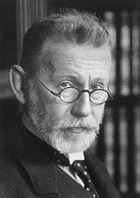 |
Paul Ehrlich Paul Ehrlich Paul Ehrlich was a German scientist in the fields of hematology, immunology, and chemotherapy, and Nobel laureate. He is noted for curing syphilis and for his research in autoimmunity, calling it "horror autotoxicus"... |
Germany | ||
| 1909 |  |
Emil Theodor Kocher Emil Theodor Kocher Emil Theodor Kocher was a Swiss physician, medical researcher, and Nobel laureate for his work in the physiology, pathology and surgery of the thyroid.... |
Switzerland Switzerland Switzerland name of one of the Swiss cantons. ; ; ; or ), in its full name the Swiss Confederation , is a federal republic consisting of 26 cantons, with Bern as the seat of the federal authorities. The country is situated in Western Europe,Or Central Europe depending on the definition.... |
"for his work on the physiology, pathology and surgery of the thyroid gland" |
| 1910 | Albrecht Kossel Albrecht Kossel Ludwig Karl Martin Leonhard Albrecht Kossel was a German biochemist and pioneer in the study of genetics. He was awarded the Nobel Prize for Physiology or Medicine in 1910 for his work in determining the chemical composition of nucleic acids, the genetic substance of biological cells.Kossel... |
Germany | "in recognition of the contributions to our knowledge of cell chemistry Cell biology Cell biology is a scientific discipline that studies cells – their physiological properties, their structure, the organelles they contain, interactions with their environment, their life cycle, division and death. This is done both on a microscopic and molecular level... made through his work on protein Protein Proteins are biochemical compounds consisting of one or more polypeptides typically folded into a globular or fibrous form, facilitating a biological function. A polypeptide is a single linear polymer chain of amino acids bonded together by peptide bonds between the carboxyl and amino groups of... s, including the nucleic substances Nucleic acid Nucleic acids are biological molecules essential for life, and include DNA and RNA . Together with proteins, nucleic acids make up the most important macromolecules; each is found in abundance in all living things, where they function in encoding, transmitting and expressing genetic information... " |
|
| 1911 |  |
Allvar Gullstrand Allvar Gullstrand Allvar Gullstrand was a Swedish ophthalmologist.Born at Landskrona, Sweden, Gullstrand was professor successively of eye therapy and of optics at the University of Uppsala. He applied the methods of physical mathematics to the study of optical images and of the refraction of light in the eye... |
Sweden Sweden Sweden , officially the Kingdom of Sweden , is a Nordic country on the Scandinavian Peninsula in Northern Europe. Sweden borders with Norway and Finland and is connected to Denmark by a bridge-tunnel across the Öresund.... |
"for his work on the dioptrics Dioptrics Dioptrics is the study of the refraction of light, especially by lenses. Telescopes that create their image with an objective that is a convex lens are said to be "dioptric" telescopes.... of the eye Human eye The human eye is an organ which reacts to light for several purposes. As a conscious sense organ, the eye allows vision. Rod and cone cells in the retina allow conscious light perception and vision including color differentiation and the perception of depth... " |
| 1912 |  |
Alexis Carrel Alexis Carrel Alexis Carrel was a French surgeon and biologist who was awarded the Nobel Prize in Physiology or Medicine in 1912 for pioneering vascular suturing techniques. He invented the first perfusion pump with Charles A. Lindbergh opening the way to organ transplantation... |
France | "[for] his work on vascular suture and the transplantation of blood vessel Blood vessel The blood vessels are the part of the circulatory system that transports blood throughout the body. There are three major types of blood vessels: the arteries, which carry the blood away from the heart; the capillaries, which enable the actual exchange of water and chemicals between the blood and... s and organ Organ (anatomy) In biology, an organ is a collection of tissues joined in structural unit to serve a common function. Usually there is a main tissue and sporadic tissues . The main tissue is the one that is unique for the specific organ. For example, main tissue in the heart is the myocardium, while sporadic are... s" |
| 1913 | 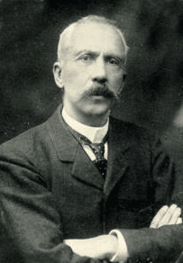 |
Charles Richet | France | "[for] his work on anaphylaxis Anaphylaxis Anaphylaxis is defined as "a serious allergic reaction that is rapid in onset and may cause death". It typically results in a number of symptoms including throat swelling, an itchy rash, and low blood pressure... " |
| 1914 |  |
Robert Bárány Robert Bárány Robert Bárány was a Austro-Hungarian otologist. For his work on the physiology and pathology of the vestibular apparatus of the ear he received the 1914 Nobel Prize in Physiology or Medicine.- Biography :... |
Austria Austria Austria , officially the Republic of Austria , is a landlocked country of roughly 8.4 million people in Central Europe. It is bordered by the Czech Republic and Germany to the north, Slovakia and Hungary to the east, Slovenia and Italy to the south, and Switzerland and Liechtenstein to the... |
"for his work on the physiology and pathology of the vestibular apparatus" |
| 1915 | Not awarded | |||
| 1916 | ||||
| 1917 | ||||
| 1918 | ||||
| 1919 |  |
Jules Bordet Jules Bordet Jules Jean Baptiste Vincent Bordet was a Belgian immunologist and microbiologist. The bacterial genus Bordetella is named after him.-Biography:Bordet was born at Soignies, Belgium... |
Belgium Belgium Belgium , officially the Kingdom of Belgium, is a federal state in Western Europe. It is a founding member of the European Union and hosts the EU's headquarters, and those of several other major international organisations such as NATO.Belgium is also a member of, or affiliated to, many... |
"for his discoveries relating to immunity Immune system An immune system is a system of biological structures and processes within an organism that protects against disease by identifying and killing pathogens and tumor cells. It detects a wide variety of agents, from viruses to parasitic worms, and needs to distinguish them from the organism's own... " |
| 1920 |  |
Schack August Steenberg Krogh August Krogh Schack August Steenberg Krogh FRS was a Danish professor of Romani background at the department of zoophysiology at the University of Copenhagen from 1916-1945... |
Denmark Denmark Denmark is a Scandinavian country in Northern Europe. The countries of Denmark and Greenland, as well as the Faroe Islands, constitute the Kingdom of Denmark . It is the southernmost of the Nordic countries, southwest of Sweden and south of Norway, and bordered to the south by Germany. Denmark... |
"for his discovery of the capillary motor regulating mechanism" |
| 1921 | Not awarded | |||
| 1922 |  |
Archibald Vivian Hill Archibald Hill Archibald Vivian Hill CH OBE FRS was an English physiologist, one of the founders of the diverse disciplines of biophysics and operations research... |
United Kingdom | "for his discovery relating to the production of heat in the muscle Muscle Muscle is a contractile tissue of animals and is derived from the mesodermal layer of embryonic germ cells. Muscle cells contain contractile filaments that move past each other and change the size of the cell. They are classified as skeletal, cardiac, or smooth muscles. Their function is to... " |
| Otto Fritz Meyerhof Otto Fritz Meyerhof -External links:* *... |
Germany | "for his discovery of the fixed relationship between the consumption of oxygen Oxygen Oxygen is the element with atomic number 8 and represented by the symbol O. Its name derives from the Greek roots ὀξύς and -γενής , because at the time of naming, it was mistakenly thought that all acids required oxygen in their composition... and the metabolism Metabolism Metabolism is the set of chemical reactions that happen in the cells of living organisms to sustain life. These processes allow organisms to grow and reproduce, maintain their structures, and respond to their environments. Metabolism is usually divided into two categories... of lactic acid Lactic acid Lactic acid, also known as milk acid, is a chemical compound that plays a role in various biochemical processes and was first isolated in 1780 by the Swedish chemist Carl Wilhelm Scheele. Lactic acid is a carboxylic acid with the chemical formula C3H6O3... in the muscle" |
||
| 1923 | 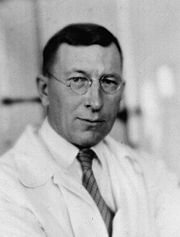 |
Frederick Grant Banting Frederick Banting Sir Frederick Grant Banting, KBE, MC, FRS, FRSC was a Canadian medical scientist, doctor and Nobel laureate noted as one of the main discoverers of insulin.... |
Canada Canada Canada is a North American country consisting of ten provinces and three territories. Located in the northern part of the continent, it extends from the Atlantic Ocean in the east to the Pacific Ocean in the west, and northward into the Arctic Ocean... |
"for the discovery of insulin Insulin Insulin is a hormone central to regulating carbohydrate and fat metabolism in the body. Insulin causes cells in the liver, muscle, and fat tissue to take up glucose from the blood, storing it as glycogen in the liver and muscle.... " |
 |
John James Rickard Macleod | Canada | ||
| 1924 |  |
Willem Einthoven Willem Einthoven Willem Einthoven was a Dutch doctor and physiologist. He invented the first practical electrocardiogram in 1903 and received the Nobel Prize in Medicine in 1924 for it.... |
"for the discovery of the mechanism of the electrocardiogram Electrocardiogram Electrocardiography is a transthoracic interpretation of the electrical activity of the heart over a period of time, as detected by electrodes attached to the outer surface of the skin and recorded by a device external to the body... " |
|
| 1925 | Not awarded | |||
| 1926 |  |
Johannes Andreas Grib Fibiger Johannes Andreas Grib Fibiger Johannes Andreas Grib Fibiger was a Danish scientist, physician, and professor of pathological anatomy who won the 1926 Nobel Prize in Physiology or Medicine. Fibiger had claimed to find an organism he called Spiroptera carcinoma that caused cancer in mice and rats. He received a Nobel prize for... |
Denmark Denmark Denmark is a Scandinavian country in Northern Europe. The countries of Denmark and Greenland, as well as the Faroe Islands, constitute the Kingdom of Denmark . It is the southernmost of the Nordic countries, southwest of Sweden and south of Norway, and bordered to the south by Germany. Denmark... |
"for his discovery of the Spiroptera carcinoma Spiroptera carcinoma Gongylonema neoplasticum is a species of nematode.It was previously known as Spiroptera carcinoma. Under this name, it was the basis of the research that won Johannes Fibiger the 1926 Nobel Prize in Physiology or Medicine.... " |
| 1927 | Julius Wagner-Jauregg Julius Wagner-Jauregg Julius Wagner-Jauregg was an Austrian physician, Nobel Laureate, and Nazi supporter.-Early life:... |
Austria | "for his discovery of the therapeutic value of malaria Malaria Malaria is a mosquito-borne infectious disease of humans and other animals caused by eukaryotic protists of the genus Plasmodium. The disease results from the multiplication of Plasmodium parasites within red blood cells, causing symptoms that typically include fever and headache, in severe cases... inoculation Inoculation Inoculation is the placement of something that will grow or reproduce, and is most commonly used in respect of the introduction of a serum, vaccine, or antigenic substance into the body of a human or animal, especially to produce or boost immunity to a specific disease... in the treatment of dementia paralytica General paresis of the insane General paresis, also known as general paralysis of the insane or paralytic dementia, is a neuropsychiatric disorder affecting the brain and central nervous system, caused by syphilis infection... " |
|
| 1928 |  |
Charles Jules Henri Nicolle Charles Nicolle Charles Jules Henry Nicolle was a French bacteriologist who received the Nobel Prize in Medicine for his identification of lice as the transmitter of epidemic typhus.- Biography :... |
France | "for his work on typhus Typhus Epidemic typhus is a form of typhus so named because the disease often causes epidemics following wars and natural disasters... " |
| 1929 |  |
Christiaan Eijkman Christiaan Eijkman Christiaan Eijkman was a Dutch physician and professor of physiology whose demonstration that beriberi is caused by poor diet led to the discovery of vitamins... |
The Netherlands | "for his discovery of the antineuritic vitamin Vitamin A vitamin is an organic compound required as a nutrient in tiny amounts by an organism. In other words, an organic chemical compound is called a vitamin when it cannot be synthesized in sufficient quantities by an organism, and must be obtained from the diet. Thus, the term is conditional both on... " |
| Sir Frederick Gowland Hopkins | United Kingdom | "for his discovery of the growth-stimulating vitamin Vitamin A vitamin is an organic compound required as a nutrient in tiny amounts by an organism. In other words, an organic chemical compound is called a vitamin when it cannot be synthesized in sufficient quantities by an organism, and must be obtained from the diet. Thus, the term is conditional both on... s" |
||
| 1930 | Karl Landsteiner Karl Landsteiner Karl Landsteiner , was an Austrian-born American biologist and physician of Jewish origin. He is noted for having first distinguished the main blood groups in 1900, having developed the modern system of classification of blood groups from his identification of the presence of agglutinins in the... |
Austria Austria Austria , officially the Republic of Austria , is a landlocked country of roughly 8.4 million people in Central Europe. It is bordered by the Czech Republic and Germany to the north, Slovakia and Hungary to the east, Slovenia and Italy to the south, and Switzerland and Liechtenstein to the... |
"for his discovery of human blood groups ABO blood group system The ABO blood group system is the most important blood type system in human blood transfusion. The associated anti-A antibodies and anti-B antibodies are usually IgM antibodies, which are usually produced in the first years of life by sensitization to environmental substances such as food,... " |
|
| 1931 | Otto Heinrich Warburg Otto Heinrich Warburg Otto Heinrich Warburg , son of physicist Emil Warburg, was a German physiologist, medical doctor and Nobel laureate. He served as an officer in the elite Uhlan during the First World War and won the Iron Cross for bravery. Warburg was one of the twentieth century's leading biochemists... |
Germany | "for his discovery of the nature and mode of action of the respiratory enzyme Cytochrome Cytochromes are, in general, membrane-bound hemoproteins that contain heme groups and carry out electron transport.They are found either as monomeric proteins or as subunits of bigger enzymatic complexes that catalyze redox reactions.... " |
|
| 1932 |  |
Sir Charles Scott Sherrington Charles Scott Sherrington Sir Charles Scott Sherrington, OM, GBE, PRS was an English neurophysiologist, histologist, bacteriologist, and a pathologist, Nobel laureate and president of the Royal Society in the early 1920s... |
United Kingdom | "for their discoveries regarding the functions of neuron Neuron A neuron is an electrically excitable cell that processes and transmits information by electrical and chemical signaling. Chemical signaling occurs via synapses, specialized connections with other cells. Neurons connect to each other to form networks. Neurons are the core components of the nervous... s" |
| Edgar Douglas Adrian Edgar Adrian, 1st Baron Adrian Edgar Douglas Adrian, 1st Baron Adrian OM PRS was a British electrophysiologist and recipient of the 1932 Nobel Prize for Physiology, won jointly with Sir Charles Sherrington for work on the function of neurons.... |
United Kingdom | |||
| 1933 |  |
Thomas Hunt Morgan Thomas Hunt Morgan Thomas Hunt Morgan was an American evolutionary biologist, geneticist and embryologist and science author who won the Nobel Prize in Physiology or Medicine in 1933 for discoveries relating the role the chromosome plays in heredity.Morgan received his PhD from Johns Hopkins University in zoology... |
United States United States The United States of America is a federal constitutional republic comprising fifty states and a federal district... |
"for his discoveries concerning the role played by the chromosome Chromosome A chromosome is an organized structure of DNA and protein found in cells. It is a single piece of coiled DNA containing many genes, regulatory elements and other nucleotide sequences. Chromosomes also contain DNA-bound proteins, which serve to package the DNA and control its functions.Chromosomes... in heredity Heredity Heredity is the passing of traits to offspring . This is the process by which an offspring cell or organism acquires or becomes predisposed to the characteristics of its parent cell or organism. Through heredity, variations exhibited by individuals can accumulate and cause some species to evolve... " |
| 1934 | George Hoyt Whipple George Whipple George Hoyt Whipple was an American physician, pathologist, biomedical researcher, and medical school educator and administrator... |
United States | "for their discoveries concerning liver Liver The liver is a vital organ present in vertebrates and some other animals. It has a wide range of functions, including detoxification, protein synthesis, and production of biochemicals necessary for digestion... therapy in cases of anaemia" |
|
| George Richards Minot George Minot George Richards Minot was an American medical researcher who shared the 1934 Nobel Prize with George Hoyt Whipple and William P. Murphy for their pioneering work on pernicious anemia.-Life:... |
United States | |||
| William Parry Murphy | United States | |||
| 1935 | Hans Spemann Hans Spemann Hans Spemann was a German embryologist who was awarded a Nobel Prize in Physiology or Medicine in 1935 for his discovery of the effect now known as embryonic induction, an influence, exercised by various parts of the embryo, that directs the development of groups of cells into particular tissues... |
Germany | "for his discovery of the organizer effect in embryonic development" | |
| 1936 | Sir Henry Hallett Dale Henry Hallett Dale Sir Henry Hallett Dale, OM, GBE, PRS was an English pharmacologist and physiologist. For his study of acetylcholine as agent in the chemical transmission of nerve impulses he shared the 1936 Nobel Prize in Physiology or Medicine with Otto Loewi.-Biography:Henry Hallett Dale was born in Islington,... |
United Kingdom | "for their discoveries relating to chemical transmission of nerve impulses Neurotransmitter Neurotransmitters are endogenous chemicals that transmit signals from a neuron to a target cell across a synapse. Neurotransmitters are packaged into synaptic vesicles clustered beneath the membrane on the presynaptic side of a synapse, and are released into the synaptic cleft, where they bind to... " |
|
 |
Otto Loewi Otto Loewi Otto Loewi was a German born pharmacologist whose discovery of acetylcholine helped enhance medical therapy. The discovery earned for him the Nobel Prize in Physiology or Medicine in 1936 which he shared with Sir Henry Dale, whom he met in 1902 when spending some months in Ernest Starling's... |
Austria | ||
| 1937 | 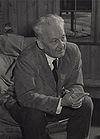 |
Albert Szent-Györgyi von Nagyrapolt Albert Szent-Györgyi Albert Szent-Györgyi de Nagyrápolt was a Hungarian physiologist who won the Nobel Prize in Physiology or Medicine in 1937. He is credited with discovering vitamin C and the components and reactions of the citric acid cycle... |
Hungary Hungary Hungary , officially the Republic of Hungary , is a landlocked country in Central Europe. It is situated in the Carpathian Basin and is bordered by Slovakia to the north, Ukraine and Romania to the east, Serbia and Croatia to the south, Slovenia to the southwest and Austria to the west. The... |
"for his discoveries in connection with the biological combustion processes Cellular respiration Cellular respiration is the set of the metabolic reactions and processes that take place in the cells of organisms to convert biochemical energy from nutrients into adenosine triphosphate , and then release waste products. The reactions involved in respiration are catabolic reactions that involve... , with special reference to vitamin C Vitamin C Vitamin C or L-ascorbic acid or L-ascorbate is an essential nutrient for humans and certain other animal species. In living organisms ascorbate acts as an antioxidant by protecting the body against oxidative stress... and the catalysis of fumaric acid Fumaric acid Fumaric acid or trans-butenedioic acid is the chemical compound with the formula HO2CCH=CHCO2H. This white crystalline compound is one of two isomeric unsaturated dicarboxylic acids, the other being maleic acid. In fumaric acid the carboxylic acid groups are trans and in maleic acid they are cis... " |
| 1938 | Corneille Jean François Heymans Corneille Heymans Corneille Jean François Heymans was a Flemish physiologist. He studied at the prestigious Jesuit College of Sainte Barbe after which he proceeded to Ghent University, where he obtained a doctor's degree in 1920.After graduation Heymans worked at the Collège de France Corneille Jean François... |
Belgium | "for the discovery of the role played by the sinus and aortic mechanisms Aorta The aorta is the largest artery in the body, originating from the left ventricle of the heart and extending down to the abdomen, where it branches off into two smaller arteries... in the regulation of respiration Respiration (physiology) 'In physiology, respiration is defined as the transport of oxygen from the outside air to the cells within tissues, and the transport of carbon dioxide in the opposite direction... " |
|
| 1939 | Gerhard Domagk Gerhard Domagk Gerhard Johannes Paul Domagk was a German pathologist and bacteriologist credited with the discovery of Sulfonamidochrysoidine – the first commercially available antibiotic – for which he received the 1939 Nobel Prize in Physiology or Medicine.Domagk was born in Lagow, Brandenburg, the... |
Germany | "for the discovery of the antibacterial effects of prontosil Prontosil Prontosil, the first commercially available antibacterial antibiotic , was developed by a research team at the Bayer Laboratories of the IG Farben conglomerate in Germany... " |
|
| 1940 | Not awarded | |||
| 1941 | ||||
| 1942 | ||||
| 1943 | Carl Peter Henrik Dam Henrik Dam Henrik Dam was a Danish biochemist and physiologist.He was awarded the Nobel Prize in Medicine in 1943 for joint work with Edward Doisy work in discovering vitamin K and its role in human physiology. Dam's key experiment involved feeding a cholesterol-free diet to chickens... |
Denmark | "for his discovery of vitamin K Vitamin K Vitamin K is a group of structurally similar, fat soluble vitamins that are needed for the posttranslational modification of certain proteins required for blood coagulation and in metabolic pathways in bone and other tissue. They are 2-methyl-1,4-naphthoquinone derivatives... " |
|
| Edward Adelbert Doisy Edward Adelbert Doisy Edward Adelbert Doisy was an American biochemist. He received the Nobel Prize in Physiology or Medicine in 1943 with Henrik Dam for their discovery of vitamin K and its chemical structure.Doisy was born in Hume, Illinois, on November 3, 1893. He completed his A.B. degree in 1914 and his M.S... |
United States | "for his discovery of the chemical nature of vitamin K Vitamin K Vitamin K is a group of structurally similar, fat soluble vitamins that are needed for the posttranslational modification of certain proteins required for blood coagulation and in metabolic pathways in bone and other tissue. They are 2-methyl-1,4-naphthoquinone derivatives... " |
||
| 1944 | Joseph Erlanger Joseph Erlanger Joseph Erlanger was an American physiologist.Erlanger was born on January 5, 1874, at San Francisco, California. He completed his B.S. in chemistry from the University of California, Berkeley and completed his M.D. in 1899 from the Johns Hopkins University... |
United States | "for their discoveries relating to the highly differentiated functions of single nerve fibres" | |
| Herbert Spencer Gasser | United States | |||
| 1945 | Sir Alexander Fleming Alexander Fleming Sir Alexander Fleming was a Scottish biologist and pharmacologist. He wrote many articles on bacteriology, immunology, and chemotherapy... |
United Kingdom | "for the discovery of penicillin Penicillin Penicillin is a group of antibiotics derived from Penicillium fungi. They include penicillin G, procaine penicillin, benzathine penicillin, and penicillin V.... and its curative effect in various infectious disease Infectious disease Infectious diseases, also known as communicable diseases, contagious diseases or transmissible diseases comprise clinically evident illness resulting from the infection, presence and growth of pathogenic biological agents in an individual host organism... s" |
|
| Sir Ernst Boris Chain Ernst Boris Chain Sir Ernst Boris Chain was a German-born British biochemist, and a 1945 co-recipient of the Nobel Prize for Physiology or Medicine for his work on penicillin.-Biography:... |
United Kingdom | |||
 |
Howard Walter Florey | Australia Australia Australia , officially the Commonwealth of Australia, is a country in the Southern Hemisphere comprising the mainland of the Australian continent, the island of Tasmania, and numerous smaller islands in the Indian and Pacific Oceans. It is the world's sixth-largest country by total area... |
||
| 1946 | Hermann Joseph Muller Hermann Joseph Muller Hermann Joseph Muller was an American geneticist, educator, and Nobel laureate best known for his work on the physiological and genetic effects of radiation as well as his outspoken political beliefs... |
United States United States The United States of America is a federal constitutional republic comprising fifty states and a federal district... |
"for the discovery of the production of mutation Mutation In molecular biology and genetics, mutations are changes in a genomic sequence: the DNA sequence of a cell's genome or the DNA or RNA sequence of a virus. They can be defined as sudden and spontaneous changes in the cell. Mutations are caused by radiation, viruses, transposons and mutagenic... s by means of X-ray X-ray X-radiation is a form of electromagnetic radiation. X-rays have a wavelength in the range of 0.01 to 10 nanometers, corresponding to frequencies in the range 30 petahertz to 30 exahertz and energies in the range 120 eV to 120 keV. They are shorter in wavelength than UV rays and longer than gamma... irradiation Irradiation Irradiation is the process by which an object is exposed to radiation. The exposure can originate from various sources, including natural sources. Most frequently the term refers to ionizing radiation, and to a level of radiation that will serve a specific purpose, rather than radiation exposure to... " |
|
| 1947 |  |
Carl Ferdinand Cori Carl Ferdinand Cori Carl Ferdinand Cori was a Czech biochemist and pharmacologist born in Prague who, together with his wife Gerty Cori and Argentine physiologist Bernardo Houssay, received a Nobel Prize in 1947 for their discovery of how glycogen – a derivative of glucose – is broken down and... |
United States | "for their discovery of the course of the catalytic conversion of glycogen Glycogen Glycogen is a molecule that serves as the secondary long-term energy storage in animal and fungal cells, with the primary energy stores being held in adipose tissue... " |
 |
Gerty Theresa Cori, née Radnitz | United States | ||
 |
Bernardo Alberto Houssay Bernardo Houssay -External links:* * . WhoNamedIt.* . Nobel Foundation.... |
Argentina Argentina Argentina , officially the Argentine Republic , is the second largest country in South America by land area, after Brazil. It is constituted as a federation of 23 provinces and an autonomous city, Buenos Aires... |
"for his discovery of the part played by the hormone Hormone A hormone is a chemical released by a cell or a gland in one part of the body that sends out messages that affect cells in other parts of the organism. Only a small amount of hormone is required to alter cell metabolism. In essence, it is a chemical messenger that transports a signal from one... of the anterior pituitary Anterior pituitary A major organ of the endocrine system, the anterior pituitary, also called the adenohypophysis, is the glandular, anterior lobe of the pituitary gland... lobe in the metabolism of sugar Glucose Glucose is a simple sugar and an important carbohydrate in biology. Cells use it as the primary source of energy and a metabolic intermediate... " |
|
| 1948 | Paul Hermann Müller Paul Hermann Müller Paul Hermann Müller also known as Pauly Mueller was a Swiss chemist and Nobel laureate. In 1948 he received the Nobel Prize in Physiology or Medicine for his 1939 discovery of insecticidal qualities and use of DDT in the control of vector diseases such as malaria and yellow fever.Müller was born... |
Switzerland | "for his discovery of the high efficiency of DDT DDT DDT is one of the most well-known synthetic insecticides. It is a chemical with a long, unique, and controversial history.... as a contact poison against several arthropods Insecticide An insecticide is a pesticide used against insects. They include ovicides and larvicides used against the eggs and larvae of insects respectively. Insecticides are used in agriculture, medicine, industry and the household. The use of insecticides is believed to be one of the major factors behind... " |
|
| 1949 | Walter Rudolf Hess Walter Rudolf Hess Walter Rudolf Hess was a Swiss physiologist who won the Nobel Prize in Physiology or Medicine in 1949 for mapping the areas of the brain involved in the control of internal organs. He shared the prize with Egas Moniz.... |
Switzerland | "for his discovery of the functional organization of the interbrain as a coordinator of the activities of the internal organs" | |
 |
António Caetano Egas Moniz | Portugal Portugal Portugal , officially the Portuguese Republic is a country situated in southwestern Europe on the Iberian Peninsula. Portugal is the westernmost country of Europe, and is bordered by the Atlantic Ocean to the West and South and by Spain to the North and East. The Atlantic archipelagos of the... |
"for his discovery of the therapeutic value of leucotomy (lobotomy Lobotomy Lobotomy "; τομή – tomē: "cut/slice") is a neurosurgical procedure, a form of psychosurgery, also known as a leukotomy or leucotomy . It consists of cutting the connections to and from the prefrontal cortex, the anterior part of the frontal lobes of the brain... ) in certain psychoses" |
|
| 1950 | Philip Showalter Hench Philip Showalter Hench Philip Showalter Hench was an American physician. Hench, along with his Mayo Clinic co-worker Edward Calvin Kendall and Swiss chemist Tadeus Reichstein was awarded the Nobel Prize for Physiology or Medicine in 1950 for the discovery of the hormone cortisone, and its application for the treatment... |
United States | "for their discoveries relating to the hormone Hormone A hormone is a chemical released by a cell or a gland in one part of the body that sends out messages that affect cells in other parts of the organism. Only a small amount of hormone is required to alter cell metabolism. In essence, it is a chemical messenger that transports a signal from one... s of the adrenal cortex Adrenal cortex Situated along the perimeter of the adrenal gland, the adrenal cortex mediates the stress response through the production of mineralocorticoids and glucocorticoids, including aldosterone and cortisol respectively. It is also a secondary site of androgen synthesis.-Layers:Notably, the reticularis in... , their structure and biological effects" |
|
| Edward Calvin Kendall Edward Calvin Kendall Edward Calvin Kendall was an American chemist. In 1950, Kendall was awarded the 1950 Nobel Prize for Physiology or Medicine along with Swiss chemist Tadeus Reichstein and Mayo Clinic physician Philip S. Hench, for their work with the hormones of the adrenal gland... |
United States | |||
| Tadeusz Reichstein Tadeus Reichstein Tadeusz Reichstein was a Polish-born Swiss chemist and Nobel laureate.Reichstein was born into a Jewish family at Włocławek, Congress Poland, and spent his early childhood at Kiev, where his father was an engineer... |
Switzerland | |||
| 1951 | Max Theiler Max Theiler Max Theiler was a South African/American virologist. He was awarded the Nobel Prize in Physiology or Medicine in 1951 for developing a vaccine against yellow fever.-Career development:... |
Union of South Africa South Africa The Republic of South Africa is a country in southern Africa. Located at the southern tip of Africa, it is divided into nine provinces, with of coastline on the Atlantic and Indian oceans... |
"for his discoveries concerning yellow fever Yellow fever Yellow fever is an acute viral hemorrhagic disease. The virus is a 40 to 50 nm enveloped RNA virus with positive sense of the Flaviviridae family.... and how to combat it" |
|
| 1952 | 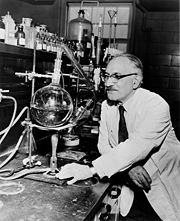 |
Selman Abraham Waksman Selman Waksman Selman Abraham Waksman was an American biochemist and microbiologist whose research into organic substances—largely into organisms that live in soil—and their decomposition promoted the discovery of Streptomycin, and several other antibiotics... |
United States | "for his discovery of streptomycin Streptomycin Streptomycin is an antibiotic drug, the first of a class of drugs called aminoglycosides to be discovered, and was the first antibiotic remedy for tuberculosis. It is derived from the actinobacterium Streptomyces griseus. Streptomycin is a bactericidal antibiotic. Streptomycin cannot be given... , the first antibiotic Antibiotic An antibacterial is a compound or substance that kills or slows down the growth of bacteria.The term is often used synonymously with the term antibiotic; today, however, with increased knowledge of the causative agents of various infectious diseases, antibiotic has come to denote a broader range of... effective against tuberculosis Tuberculosis Tuberculosis, MTB, or TB is a common, and in many cases lethal, infectious disease caused by various strains of mycobacteria, usually Mycobacterium tuberculosis. Tuberculosis usually attacks the lungs but can also affect other parts of the body... " |
| 1953 | Sir Hans Adolf Krebs Hans Adolf Krebs Sir Hans Adolf Krebs was a German-born British physician and biochemist. Krebs is best known for his identification of two important metabolic cycles: the urea cycle and the citric acid cycle... |
United Kingdom | "for his discovery of the citric acid cycle Citric acid cycle The citric acid cycle — also known as the tricarboxylic acid cycle , the Krebs cycle, or the Szent-Györgyi-Krebs cycle — is a series of chemical reactions which is used by all aerobic living organisms to generate energy through the oxidization of acetate derived from carbohydrates, fats and... " |
|
,_biochemist_(2551001689).jpg) |
Fritz Albert Lipmann Fritz Albert Lipmann Fritz Albert Lipmann FRS was a German-American biochemist and a co-discoverer in 1945 of coenzyme A. For this, together with other research on coenzyme A, he was awarded half the Nobel Prize in Physiology or Medicine in 1953 .Lipmann was born in Königsberg, Germany to a Jewish family.Lipmann... |
United States | "for his discovery of co-enzyme A Coenzyme A Coenzyme A is a coenzyme, notable for its role in the synthesis and oxidation of fatty acids, and the oxidation of pyruvate in the citric acid cycle. All sequenced genomes encode enzymes that use coenzyme A as a substrate, and around 4% of cellular enzymes use it as a substrate... and its importance for intermediary metabolism" |
|
| 1954 | John Franklin Enders John Franklin Enders John Franklin Enders was an American medical scientist and Nobel laureate. Enders had been called "The Father of Modern Vaccines."-Life:... |
United States | "for their discovery of the ability of poliomyelitis Poliomyelitis Poliomyelitis, often called polio or infantile paralysis, is an acute viral infectious disease spread from person to person, primarily via the fecal-oral route... virus Virus A virus is a small infectious agent that can replicate only inside the living cells of organisms. Viruses infect all types of organisms, from animals and plants to bacteria and archaea... es to grow in cultures of various types of tissue" |
|
| Frederick Chapman Robbins | United States | |||
| Thomas Huckle Weller Thomas Huckle Weller Thomas Huckle Weller was an American virologist. He, John Franklin Enders and Frederick Chapman Robbins were awarded a Nobel Prize in Physiology or Medicine in 1954 for showing how to cultivate poliomyelitis viruses in a test tube, using tissue from a monkey.Weller was born and grew up in Ann... |
United States | |||
| 1955 | Axel Hugo Theodor Theorell Hugo Theorell Axel Hugo Theodor Theorell was a Swedish scientist and Nobel Prize laureate in medicine.He was born in Linköping as the son of Thure Theorell and his wife Armida Bill. Theorell went to Secondary School at Katedralskolan in Linköping and passed his examination there on 23 May 1921... |
Sweden | "for his discoveries concerning the nature and mode of action of oxidation enzymes" | |
| 1956 | André Frédéric Cournand André Frédéric Cournand André Frédéric Cournand was a French physician and physiologist.He was awarded the Nobel Prize in Physiology or Medicine in 1956 along with Werner Forssmann and Dickinson W. Richards for the development of cardiac catheterization.Born in Paris, Cournand emigrated to the United States in 1930 and,... |
United States | "for their discoveries concerning heart catheterization and pathological changes in the circulatory system Circulatory system The circulatory system is an organ system that passes nutrients , gases, hormones, blood cells, etc... " |
|
| Werner Forssmann Werner Forssmann Werner Theodor Otto Forßmann, was a physician from Germany who shared the 1956 Nobel Prize in Medicine for developing a procedure that allowed for cardiac catheterization. In 1929, he put himself under local anesthetic and inserted a catheter into his own arm... |
Federal Republic of Germany West Germany West Germany is the common English, but not official, name for the Federal Republic of Germany or FRG in the period between its creation in May 1949 to German reunification on 3 October 1990.... |
|||
| Dickinson W. Richards Dickinson W. Richards Dr. Dickinson Woodruff Richards, Jr. was an American physician and physiologist. He was a co-recipient of the Nobel Prize in Physiology or Medicine in 1956 with André Cournand and Werner Forssmann for the development of cardiac catheterization and the characterisation of a number of cardiac... |
United States | |||
| 1957 | Daniel Bovet Daniel Bovet Daniel Bovet was a Swiss-born Italian pharmacologist who won the 1957 Nobel Prize in Physiology or Medicine for his discovery of drugs that block the actions of specific neurotransmitters. He is best known for his discovery in 1937 of antihistamines, which block the neurotransmitter histamine and... |
Italy Italy Italy , officially the Italian Republic languages]] under the European Charter for Regional or Minority Languages. In each of these, Italy's official name is as follows:;;;;;;;;), is a unitary parliamentary republic in South-Central Europe. To the north it borders France, Switzerland, Austria and... |
"for his discoveries relating to synthetic compounds that inhibit the action of certain body substances Antihistamine An H1 antagonist is a histamine antagonist of the H1 receptor that serves to reduce or eliminate effects mediated by histamine, an endogenous chemical mediator released during allergic reactions... , and especially their action on the vascular system and the skeletal muscles" |
|
| 1958 | George Wells Beadle | United States | "for their discovery that gene Gene A gene is a molecular unit of heredity of a living organism. It is a name given to some stretches of DNA and RNA that code for a type of protein or for an RNA chain that has a function in the organism. Living beings depend on genes, as they specify all proteins and functional RNA chains... s act by regulating definite chemical events" |
|
| Edward Lawrie Tatum Edward Lawrie Tatum Edward Lawrie Tatum was an American geneticist. He shared half of the Nobel Prize in Physiology or Medicine in 1958 with George Wells Beadle for showing that genes control individual steps in metabolism... |
United States | |||
| Joshua Lederberg Joshua Lederberg Joshua Lederberg ForMemRS was an American molecular biologist known for his work in microbial genetics, artificial intelligence, and the United States space program. He was just 33 years old when he won the 1958 Nobel Prize in Physiology or Medicine for discovering that bacteria can mate and... |
United States | "for his discoveries concerning genetic recombination Genetic recombination Genetic recombination is a process by which a molecule of nucleic acid is broken and then joined to a different one. Recombination can occur between similar molecules of DNA, as in homologous recombination, or dissimilar molecules, as in non-homologous end joining. Recombination is a common method... and the organization of the genetic material Gene A gene is a molecular unit of heredity of a living organism. It is a name given to some stretches of DNA and RNA that code for a type of protein or for an RNA chain that has a function in the organism. Living beings depend on genes, as they specify all proteins and functional RNA chains... of bacteria Bacteria Bacteria are a large domain of prokaryotic microorganisms. Typically a few micrometres in length, bacteria have a wide range of shapes, ranging from spheres to rods and spirals... " |
||
| 1959 | 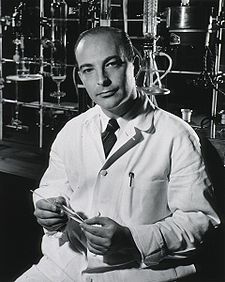 |
Arthur Kornberg Arthur Kornberg Arthur Kornberg was an American biochemist who won the Nobel Prize in Physiology or Medicine 1959 for his discovery of "the mechanisms in the biological synthesis of deoxyribonucleic acid " together with Dr. Severo Ochoa of New York University... |
United States | "for their discovery of the mechanisms in the biological synthesis of ribonucleic acid and deoxyribonucleic acid" |
| Severo Ochoa Severo Ochoa Severo Ochoa de Albornoz was a Spanish-American doctor and biochemist, and joint winner of the 1959 Nobel Prize in Physiology or Medicine with Arthur Kornberg.-Early life:... |
Spain United States |
|||
| 1960 | 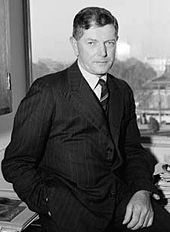 |
Sir Frank Macfarlane Burnet Frank Macfarlane Burnet Sir Frank Macfarlane Burnet, , usually known as Macfarlane or Mac Burnet, was an Australian virologist best known for his contributions to immunology.... |
Australia | "for discovery of acquired immunological tolerance Immune tolerance Immune tolerance or immunological tolerance is the process by which the immune system does not attack an antigen. It can be either 'natural' or 'self tolerance', in which the body does not mount an immune response to self antigens, or 'induced tolerance', in which tolerance to external antigens can... " |
| Sir Peter Brian Medawar Peter Medawar Sir Peter Brian Medawar OM CBE FRS was a British biologist, whose work on graft rejection and the discovery of acquired immune tolerance was fundamental to the practice of tissue and organ transplants... |
United Kingdom | |||
| 1961 | Georg von Békésy Georg von Békésy Georg von Békésy was a Hungarian biophysicist born in Budapest, Hungary.In 1961, he was awarded the Nobel Prize in Physiology or Medicine for his research on the function of the cochlea in the mammalian hearing organ.-Research:Békésy developed a method for dissecting the inner ear of human... |
United States | "for his discoveries of the physical mechanism of stimulation within the cochlea Cochlea The cochlea is the auditory portion of the inner ear. It is a spiral-shaped cavity in the bony labyrinth, making 2.5 turns around its axis, the modiolus.... " |
|
| 1962 |  |
Francis Harry Compton Crick Francis Crick Francis Harry Compton Crick OM FRS was an English molecular biologist, biophysicist, and neuroscientist, and most noted for being one of two co-discoverers of the structure of the DNA molecule in 1953, together with James D. Watson... |
United Kingdom | "for their discoveries concerning the molecular structure of nucleic acid Nucleic acid Nucleic acids are biological molecules essential for life, and include DNA and RNA . Together with proteins, nucleic acids make up the most important macromolecules; each is found in abundance in all living things, where they function in encoding, transmitting and expressing genetic information... s and its significance for information transfer in living material" |
| James Dewey Watson James D. Watson James Dewey Watson is an American molecular biologist, geneticist, and zoologist, best known as one of the co-discoverers of the structure of DNA in 1953 with Francis Crick... |
United States | |||
| Maurice Hugh Frederick Wilkins Maurice Wilkins Maurice Hugh Frederick Wilkins CBE FRS was a New Zealand-born English physicist and molecular biologist, and Nobel Laureate whose research contributed to the scientific understanding of phosphorescence, isotope separation, optical microscopy and X-ray diffraction, and to the development of radar... |
New Zealand New Zealand New Zealand is an island country in the south-western Pacific Ocean comprising two main landmasses and numerous smaller islands. The country is situated some east of Australia across the Tasman Sea, and roughly south of the Pacific island nations of New Caledonia, Fiji, and Tonga... United Kingdom |
|||
| 1963 | Sir John Carew Eccles John Carew Eccles John Carew Eccles, AC FRS FRACP FRSNZ FAAS was an Australian neurophysiologist who won the 1963 Nobel Prize in Physiology or Medicine for his work on the synapse. He shared the prize with Andrew Huxley and Alan Lloyd Hodgkin.... |
Australia | "for their discoveries concerning the ionic mechanisms involved in excitation and inhibition in the peripheral and central portions of the nerve Nerve A peripheral nerve, or simply nerve, is an enclosed, cable-like bundle of peripheral axons . A nerve provides a common pathway for the electrochemical nerve impulses that are transmitted along each of the axons. Nerves are found only in the peripheral nervous system... cell membrane Cell membrane The cell membrane or plasma membrane is a biological membrane that separates the interior of all cells from the outside environment. The cell membrane is selectively permeable to ions and organic molecules and controls the movement of substances in and out of cells. It basically protects the cell... " |
|
| Sir Alan Lloyd Hodgkin Alan Lloyd Hodgkin Sir Alan Lloyd Hodgkin, OM, KBE, PRS was a British physiologist and biophysicist, who shared the 1963 Nobel Prize in Physiology or Medicine with Andrew Huxley and John Eccles.... |
United Kingdom | |||
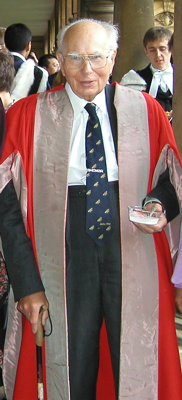 |
Sir Andrew Fielding Huxley Andrew Huxley Sir Andrew Fielding Huxley, OM, FRS is an English physiologist and biophysicist, who won the 1963 Nobel Prize in Physiology or Medicine for his experimental and mathematical work with Sir Alan Lloyd Hodgkin on the basis of nerve action potentials, the electrical impulses that enable the activity... |
United Kingdom | ||
| 1964 | Konrad Bloch Konrad Emil Bloch Konrad Emil Bloch ForMemRS was a German American biochemist. Bloch received Nobel Prize in Medicine or Physiology in 1964 for discoveries concerning the mechanism and regulation of the cholesterol and fatty acid metabolism.-Biography:Bloch was born in Neisse in the German Empire's Prussian... |
United States | "for their discoveries concerning the mechanism and regulation of the cholesterol Cholesterol Cholesterol is a complex isoprenoid. Specifically, it is a waxy steroid of fat that is produced in the liver or intestines. It is used to produce hormones and cell membranes and is transported in the blood plasma of all mammals. It is an essential structural component of mammalian cell membranes... and fatty acid Fatty acid In chemistry, especially biochemistry, a fatty acid is a carboxylic acid with a long unbranched aliphatic tail , which is either saturated or unsaturated. Most naturally occurring fatty acids have a chain of an even number of carbon atoms, from 4 to 28. Fatty acids are usually derived from... metabolism Metabolism Metabolism is the set of chemical reactions that happen in the cells of living organisms to sustain life. These processes allow organisms to grow and reproduce, maintain their structures, and respond to their environments. Metabolism is usually divided into two categories... " |
|
| Feodor Lynen Feodor Felix Konrad Lynen Feodor Felix Konrad Lynen was a German biochemist.- Biography :Feodor Lynen was born in Munich, Germany on 6 April 1911. He started his studies at the chemistry department of Munich University in 1930 and graduated in March 1937 under Heinrich Wieland with the work: "On the Toxic Substances in... |
Federal Republic of Germany | |||
| 1965 | François Jacob François Jacob François Jacob is a French biologist who, together with Jacques Monod, originated the idea that control of enzyme levels in all cells occurs through feedback on transcription. He shared the 1965 Nobel Prize in Medicine with Jacques Monod and André Lwoff.-Childhood and education:François Jacob is... |
France | "for their discoveries concerning genetic control of enzyme Transcription (genetics) Transcription is the process of creating a complementary RNA copy of a sequence of DNA. Both RNA and DNA are nucleic acids, which use base pairs of nucleotides as a complementary language that can be converted back and forth from DNA to RNA by the action of the correct enzymes... and virus synthesis Provirus A provirus is a virus genome that is integrated into the DNA of a host cell.This state can be a stage of virus replication, or a state that persists over longer periods of time as either inactive viral infections or an endogenous retrovirus. In inactive viral infections the virus will not replicate... " |
|
| André Lwoff André Michel Lwoff André Michel Lwoff was a French microbiologist. He was born in Ainay-le-Château, Allier, in Auvergne, France. He joined the Institute Pasteur in Paris when he was 19 years old... |
France | |||
| Jacques Monod Jacques Monod Jacques Lucien Monod was a French biologist who was awarded a Nobel Prize in Physiology or Medicine in 1965, sharing it with François Jacob and Andre Lwoff "for their discoveries concerning genetic control of enzyme and virus synthesis"... |
France | |||
| 1966 | Peyton Rous Francis Peyton Rous Peyton Rous born in Baltimore, Maryland in 1879 and received his B.A. and M.D. from Johns Hopkins University. He was involved in the discovery of the role of viruses in the transmission of certain types of cancer... |
United States | "for his discovery of tumour-inducing virus Virus A virus is a small infectious agent that can replicate only inside the living cells of organisms. Viruses infect all types of organisms, from animals and plants to bacteria and archaea... es" |
|
| Charles Brenton Huggins Charles Brenton Huggins Charles Brenton Huggins was a Canadian-born American physician and physiologist and cancer researcher at the University of Chicago specializing in prostate cancer. He and Peyton Rous were awarded the 1966 Nobel Prize for Physiology or Medicine for discovering that hormones could be used to control... |
United States | "for his discoveries concerning hormonal treatment Hormonal therapy (oncology) Hormonal therapy is one of the major modalities of medical treatment for cancer, others being cytotoxic chemotherapy and targeted therapy . It involves the manipulation of the endocrine system through exogenous administration of specific hormones, particularly steroid hormones, or drugs which... of prostatic cancer" |
||
| 1967 | Ragnar Granit Ragnar Granit Ragnar Arthur Granit was a Finnish/Swedish scientist who was awarded the Nobel Prize in Physiology or Medicine in 1967 along with Haldan Keffer Hartline and George Wald.... |
Finland/Sweden | "for their discoveries concerning the primary physiological and chemical visual processes in the eye Human eye The human eye is an organ which reacts to light for several purposes. As a conscious sense organ, the eye allows vision. Rod and cone cells in the retina allow conscious light perception and vision including color differentiation and the perception of depth... " |
|
| Haldan Keffer Hartline Haldan Keffer Hartline Haldan Keffer Hartline was an American physiologist who was a co-winner of the 1967 Nobel Prize in Physiology or Medicine for his work in analyzing the neurophysiological mechanisms of vision.Hartline began his study of retinal electrophysiology as a National Research Council Fellow at Johns... |
United States | |||
| George Wald George Wald George Wald was an American scientist who is best known for his work with pigments in the retina. He won a share of the 1967 Nobel Prize in Physiology or Medicine with Haldan Keffer Hartline and Ragnar Granit.- Research :... |
United States | |||
| 1968 | Robert W. Holley Robert W. Holley Robert William Holley was an American biochemist. He shared the Nobel Prize in Physiology or Medicine in 1968 for describing the structure of alanine transfer RNA, linking DNA and protein synthesis.Holley was born in Urbana, Illinois, and graduated from Urbana High School in 1938... |
United States | "for their interpretation of the genetic code Genetic code The genetic code is the set of rules by which information encoded in genetic material is translated into proteins by living cells.... and its function in protein synthesis Protein biosynthesis Protein biosynthesis is the process in which cells build or manufacture proteins. The term is sometimes used to refer only to protein translation but more often it refers to a multi-step process, beginning with amino acid synthesis and transcription of nuclear DNA into messenger RNA, which is then... " |
|
| Har Gobind Khorana | India | |||
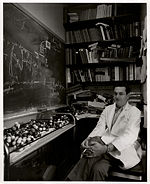 |
Marshall W. Nirenberg Marshall Warren Nirenberg Marshall Warren Nirenberg was an American biochemist and geneticist of Jewish origin. He shared a Nobel Prize in Physiology or Medicine in 1968 with Har Gobind Khorana and Robert W. Holley for "breaking the genetic code" and describing how it operates in protein synthesis... |
United States | ||
| 1969 |  |
Max Delbrück Max Delbrück Max Ludwig Henning Delbrück was a German-American biophysicist and Nobel laureate.-Biography:Delbrück was born in Berlin, German Empire... |
United States | "for their discoveries concerning the replication mechanism and the genetic structure of virus Virus A virus is a small infectious agent that can replicate only inside the living cells of organisms. Viruses infect all types of organisms, from animals and plants to bacteria and archaea... es" |
| Alfred D. Hershey Alfred Hershey Alfred Day Hershey was an American Nobel Prize-winning bacteriologist and geneticist.He was born in Owosso, Michigan and received his B.S. in chemistry at Michigan State University in 1930 and his Ph.D. in bacteriology in 1934, taking a position shortly thereafter at the Department of Bacteriology... |
United States | |||
| Salvador E. Luria | United States | |||
| 1970 |  |
Julius Axelrod Julius Axelrod Julius Axelrod was an American biochemist. He won a share of the Nobel Prize in Physiology or Medicine in 1970 along with Bernard Katz and Ulf von Euler... |
United States | "for their discoveries concerning the humoral transmittors in the nerve terminals Neurotransmitter Neurotransmitters are endogenous chemicals that transmit signals from a neuron to a target cell across a synapse. Neurotransmitters are packaged into synaptic vesicles clustered beneath the membrane on the presynaptic side of a synapse, and are released into the synaptic cleft, where they bind to... and the mechanism for their storage, release and inactivation" |
| Ulf von Euler Ulf von Euler Ulf Svante von Euler was a Swedish physiologist and pharmacologist. He won a Nobel Prize in Physiology or Medicine in 1970 for his work on neurotransmitters.-Life:... |
Sweden | |||
| Sir Bernard Katz Bernard Katz Sir Bernard Katz, FRS was a German-born biophysicist, noted for his work on nerve biochemistry. He shared the Nobel Prize in physiology or medicine in 1970 with Julius Axelrod and Ulf von Euler... |
United Kingdom | |||
| 1971 | Earl W. Sutherland, Jr. | United States | "for his discoveries concerning the mechanisms of the action of hormone Hormone A hormone is a chemical released by a cell or a gland in one part of the body that sends out messages that affect cells in other parts of the organism. Only a small amount of hormone is required to alter cell metabolism. In essence, it is a chemical messenger that transports a signal from one... s" |
|
| 1972 | Gerald M. Edelman Gerald Edelman Gerald Maurice Edelman is an American biologist who shared the 1972 Nobel Prize in Physiology or Medicine for work with Rodney Robert Porter on the immune system. Edelman's Nobel Prize-winning research concerned discovery of the structure of antibody molecules... |
United States | "for their discoveries concerning the chemical structure of antibodies" | |
| Rodney R. Porter Rodney Robert Porter Rodney Robert Porter, FRS was an English biochemist and Nobel laureate.Born in Newton-le-Willows, St Helens, Lancashire, England, Rodney Robert Porter received his Bachelors of Sciences degree from the University of Liverpool in 1939 for Biochemistry. He moved to the University of Cambridge where... |
United Kingdom | |||
| 1973 | Karl von Frisch Karl von Frisch Karl Ritter von Frisch was an Austrian ethologist who received the Nobel Prize in Physiology or Medicine in 1973, along with Nikolaas Tinbergen and Konrad Lorenz.... |
Federal Republic of Germany | "for their discoveries concerning organization and elicitation of individual and social behaviour patterns" | |
 |
Konrad Lorenz Konrad Lorenz Konrad Zacharias Lorenz was an Austrian zoologist, ethologist, and ornithologist. He shared the 1973 Nobel Prize with Nikolaas Tinbergen and Karl von Frisch... |
Austria | ||
| Nikolaas Tinbergen Nikolaas Tinbergen Nikolaas "Niko" Tinbergen was a Dutch ethologist and ornithologist who shared the 1973 Nobel Prize in Physiology or Medicine with Karl von Frisch and Konrad Lorenz for their discoveries concerning organization and elicitation of individual and social behaviour patterns in animals.In the 1960s he... |
United Kingdom | |||
| 1974 | Albert Claude Albert Claude Albert Claude was a Belgian biologist who shared the Nobel Prize in Physiology or Medicine in 1974 with Christian de Duve and George Emil Palade. He studied engineering, and then medicine... |
Belgium Belgium Belgium , officially the Kingdom of Belgium, is a federal state in Western Europe. It is a founding member of the European Union and hosts the EU's headquarters, and those of several other major international organisations such as NATO.Belgium is also a member of, or affiliated to, many... |
"for their discoveries concerning the structural and functional organization of the cell Organelle In cell biology, an organelle is a specialized subunit within a cell that has a specific function, and is usually separately enclosed within its own lipid bilayer.... " |
|
| Christian de Duve Christian de Duve Christian René, viscount de Duve is a Nobel Prize-winning cytologist and biochemist. De Duve was born in Thames Ditton, Surrey, Great Britain, as a son of Belgian refugees. They returned to Belgium in 1920... |
Belgium | |||
| George E. Palade George Emil Palade George Emil Palade was a Romanian cell biologist. Described as "the most influential cell biologist ever", in 1974 he was awarded the Nobel Prize in Physiology and Medicine, together with Albert Claude and Christian de Duve. The prize was granted for his innovations in electron microscopy and... |
United States | |||
| 1975 |  |
David Baltimore David Baltimore David Baltimore is an American biologist, university administrator, and Nobel laureate in Physiology or Medicine. He served as president of the California Institute of Technology from 1997 to 2006, and is currently the Robert A. Millikan Professor of Biology at Caltech... |
United States | "for their discoveries concerning the interaction between tumour viruses and the genetic material of the cell" |
| Renato Dulbecco Renato Dulbecco Renato Dulbecco is an Italian virologist who won a 1975 Nobel Prize in Physiology or Medicine for his work on reverse transcriptase. In 1973 he was awarded the Louisa Gross Horwitz Prize from Columbia University together with Theodore Puck and Harry Eagle. Dulbecco was the recipient of the Selman A... |
Italy United States |
|||
| Howard Martin Temin Howard Martin Temin Howard Martin Temin was a U.S. geneticist. Along with Renato Dulbecco and David Baltimore he discovered reverse transcriptase in the 1970s at the University of Wisconsin–Madison, for which he shared the 1975 Nobel Prize in Physiology or Medicine.-Scientific career:Temin's description of how tumor... |
United States | |||
| 1976 | Baruch S. Blumberg Baruch Samuel Blumberg Baruch Samuel "Barry" Blumberg was an American doctor and co-recipient of the 1976 Nobel Prize in Physiology or Medicine , and the President of the American Philosophical Society from 2005 until his death.Blumberg received the Nobel Prize for "discoveries concerning new mechanisms for the origin... |
United States | "for their discoveries concerning new mechanisms for the origin and dissemination of infectious disease Infectious disease Infectious diseases, also known as communicable diseases, contagious diseases or transmissible diseases comprise clinically evident illness resulting from the infection, presence and growth of pathogenic biological agents in an individual host organism... s" |
|
| D. Carleton Gajdusek Daniel Carleton Gajdusek Daniel Carleton Gajdusek was an American physician and medical researcher who was the co-recipient of the Nobel Prize in Physiology or Medicine in 1976 for work on kuru, the first human prion disease demonstrated to be infectious.... |
United States | |||
| 1977 | Roger Guillemin Roger Guillemin Roger Charles Louis Guillemin received the National Medal of Science in 1976, and the Nobel prize for medicine in 1977 for his work on neurohormones, sharing the prize that year with Andrew Schally and Rosalyn Sussman Yalow.Completing his undergraduate work at the University of Burgundy, Guillemin... |
United States | "for their discoveries concerning the peptide hormone Peptide hormone Peptide hormones are a class of peptides that are secreted into the blood stream and have endocrine functions in living animals.Like other proteins, peptide hormones are synthesized in cells from amino acids according to an mRNA template, which is itself synthesized from a DNA template inside the... production of the brain Brain The brain is the center of the nervous system in all vertebrate and most invertebrate animals—only a few primitive invertebrates such as sponges, jellyfish, sea squirts and starfishes do not have one. It is located in the head, usually close to primary sensory apparatus such as vision, hearing,... " |
|
 |
Andrew V. Schally | United States | ||
| Rosalyn Yalow Rosalyn Sussman Yalow Rosalyn Sussman Yalow was an American medical physicist, and a co-winner of the 1977 Nobel Prize in Physiology or Medicine for development of the radioimmunoassay technique... |
United States | "for the development of radioimmunoassay Radioimmunoassay Radioimmunoassay is a very sensitive in vitro assay technique used to measure concentrations of antigens by use of antibodies... s of peptide hormone Peptide hormone Peptide hormones are a class of peptides that are secreted into the blood stream and have endocrine functions in living animals.Like other proteins, peptide hormones are synthesized in cells from amino acids according to an mRNA template, which is itself synthesized from a DNA template inside the... s" |
||
| 1978 | 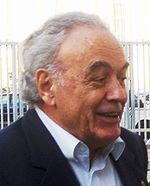 |
Werner Arber Werner Arber Werner Arber is a Swiss microbiologist and geneticist. Along with American researchers Hamilton Smith and Daniel Nathans, Werner Arber shared the 1978 Nobel Prize in Physiology or Medicine for the discovery of restriction endonucleases... |
Switzerland | "for the discovery of restriction enzyme Restriction enzyme A Restriction Enzyme is an enzyme that cuts double-stranded DNA at specific recognition nucleotide sequences known as restriction sites. Such enzymes, found in bacteria and archaea, are thought to have evolved to provide a defense mechanism against invading viruses... s and their application to problems of molecular genetics Molecular genetics Molecular genetics is the field of biology and genetics that studies the structure and function of genes at a molecular level. The field studies how the genes are transferred from generation to generation. Molecular genetics employs the methods of genetics and molecular biology... " |
| Daniel Nathans Daniel Nathans Daniel Nathans was an American microbiologist.He was born in Wilmington, Delaware, the last of nine children born to Russian Jewish immigrant parents. During the Great Depression his father lost his small business and was unemployed for a long period of time... |
United States | |||
 |
Hamilton O. Smith Hamilton O. Smith Hamilton Othanel Smith is an American microbiologist and Nobel laureate.Smith was born on August 23, 1931, and graduated from University Laboratory High School of Urbana, Illinois. He attended the University of Illinois at Urbana-Champaign, but in 1950 transferred to the University of California,... |
United States | ||
| 1979 | Allan M. Cormack Allan McLeod Cormack Allan MacLeod Cormack was a South African-born American physicist who won the 1979 Nobel Prize in Physiology or Medicine for his work on X-ray computed tomography .... |
United States | "for the development of computer assisted tomography" | |
| Sir Godfrey N. Hounsfield Godfrey Hounsfield Sir Godfrey Newbold Hounsfield CBE, FRS, was an English electrical engineer who shared the 1979 Nobel Prize for Physiology or Medicine with Allan McLeod Cormack for his part in developing the diagnostic technique of X-ray computed tomography .His name is immortalised in the Hounsfield scale, a... |
United Kingdom | |||
| 1980 | Baruj Benacerraf Baruj Benacerraf Baruj Benacerraf was a Venezuelan-born American immunologist, who shared the 1980 Nobel Prize in Physiology or Medicine for the "discovery of the major histocompatibility complex genes which encode cell surface protein molecules important for the immune system's distinction between self and... |
Venezuela | "for their discoveries concerning genetically determined structures on the cell surface Major histocompatibility complex Major histocompatibility complex is a cell surface molecule encoded by a large gene family in all vertebrates. MHC molecules mediate interactions of leukocytes, also called white blood cells , which are immune cells, with other leukocytes or body cells... that regulate immunological reactions Immune system An immune system is a system of biological structures and processes within an organism that protects against disease by identifying and killing pathogens and tumor cells. It detects a wide variety of agents, from viruses to parasitic worms, and needs to distinguish them from the organism's own... " |
|
| Jean Dausset Jean Dausset Jean-Baptiste-Gabriel-Joachim Dausset was a French immunologist born in Toulouse, France. He married Rose Mayoral in 1963, with whom he had two children, Henri and Irène... |
France | |||
| George D. Snell George Davis Snell George Davis Snell was an American mouse geneticist and basic transplant immunologist.-Work:George Snell shared the 1980 Nobel Prize in Physiology or Medicine with Baruj Benacerraf and Jean Dausset for their discoveries concerning "genetically determined structures on the cell surface that... |
United States | |||
| 1981 | Roger W. Sperry Roger Wolcott Sperry Roger Wolcott Sperry was a neuropsychologist, neurobiologist and Nobel laureate who, together with David Hunter Hubel and Torsten Nils Wiesel, won the 1981 Nobel Prize in Medicine for his work with split-brain research.... |
United States | "for his discoveries concerning the functional specialization of the cerebral hemisphere Cerebral hemisphere A cerebral hemisphere is one of the two regions of the eutherian brain that are delineated by the median plane, . The brain can thus be described as being divided into left and right cerebral hemispheres. Each of these hemispheres has an outer layer of grey matter called the cerebral cortex that is... s" |
|
| David H. Hubel David H. Hubel David Hunter Hubel is the John Franklin Enders Professor of Neurobiology, Emeritus, at Harvard Medical School. He was co-recipient with Torsten Wiesel of the 1981 Nobel Prize in Physiology or Medicine, for their discoveries concerning information processing in the visual system; the prize was... |
United States | "for their discoveries concerning information processing in the visual system Visual system The visual system is the part of the central nervous system which enables organisms to process visual detail, as well as enabling several non-image forming photoresponse functions. It interprets information from visible light to build a representation of the surrounding world... " |
||
| Torsten N. Wiesel | Sweden | |||
| 1982 | Sune K. Bergström Sune Bergström Karl Sune Detlof Bergström was a Swedish biochemist.In 1975, he was appointed to the Nobel Foundation Board of Directors in Sweden.... |
Sweden | "for their discoveries concerning prostaglandin Prostaglandin A prostaglandin is any member of a group of lipid compounds that are derived enzymatically from fatty acids and have important functions in the animal body. Every prostaglandin contains 20 carbon atoms, including a 5-carbon ring.... s and related biologically active substances" |
|
| Bengt I. Samuelsson Bengt I. Samuelsson -External links:**... |
Sweden | |||
| Sir John R. Vane John Robert Vane Sir John Robert Vane FRS was an English pharmacologist and Nobel Laureate, born in Tardebigg, Worcestershire. His father was the son of Russian immigrants and his mother came from a Worcestershire farming family. He was educated at King Edward's School in Edgbaston, Birmingham, and studied... |
United Kingdom | |||
| 1983 | Barbara McClintock Barbara McClintock Barbara McClintock , the 1983 Nobel Laureate in Physiology or Medicine, was an American scientist and one of the world's most distinguished cytogeneticists. McClintock received her PhD in botany from Cornell University in 1927, where she was a leader in the development of maize cytogenetics... |
United States | "for her discovery of mobile genetic elements Transposon Transposable elements are sequences of DNA that can move or transpose themselves to new positions within the genome of a single cell. The mechanism of transposition can be either "copy and paste" or "cut and paste". Transposition can create phenotypically significant mutations and alter the cell's... " |
|
| 1984 | Niels K. Jerne Niels Kaj Jerne Niels Kaj Jerne, FRS was a Danish immunologist. He was awarded the Nobel Prize in Physiology or Medicine in 1984. The citation read "For theories concerning the specificity in development and control of the immune system and the discovery of the principle for production of monoclonal antibodies".... |
Denmark | "for theories concerning the specificity in development and control of the immune system Immune system An immune system is a system of biological structures and processes within an organism that protects against disease by identifying and killing pathogens and tumor cells. It detects a wide variety of agents, from viruses to parasitic worms, and needs to distinguish them from the organism's own... and the discovery of the principle for production of monoclonal antibodies Monoclonal antibodies Monoclonal antibodies are monospecific antibodies that are the same because they are made by identical immune cells that are all clones of a unique parent cell.... " |
|
| Georges J.F. Köhler Georges J. F. Köhler -External links:* http://www.nobel.se/medicine/laureates/1984/... |
Federal Republic of Germany | |||
| César Milstein César Milstein César Milstein FRS was an Argentine biochemist in the field of antibody research. Milstein shared the Nobel Prize in Physiology or Medicine in 1984 with Niels K. Jerne and Georges Köhler.-Biography:... |
Argentina Argentina Argentina , officially the Argentine Republic , is the second largest country in South America by land area, after Brazil. It is constituted as a federation of 23 provinces and an autonomous city, Buenos Aires... United Kingdom |
|||
| 1985 |  |
Michael S. Brown Michael Stuart Brown Michael Stuart Brown is an American geneticist and Nobel Laureate. He was awarded the Nobel Prize in Physiology or Medicine with Joseph L. Goldstein in 1985 for describing the regulation of cholesterol metabolism.- Life and career :... |
United States | "for their discoveries concerning the regulation of cholesterol Cholesterol Cholesterol is a complex isoprenoid. Specifically, it is a waxy steroid of fat that is produced in the liver or intestines. It is used to produce hormones and cell membranes and is transported in the blood plasma of all mammals. It is an essential structural component of mammalian cell membranes... metabolism Metabolism Metabolism is the set of chemical reactions that happen in the cells of living organisms to sustain life. These processes allow organisms to grow and reproduce, maintain their structures, and respond to their environments. Metabolism is usually divided into two categories... " |
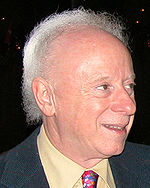 |
Joseph L. Goldstein Joseph L. Goldstein Joseph L. Goldstein from Kingstree, South Carolina is a Nobel Prize winning biochemist and geneticist, and a pioneer in the study of cholesterol metabolism.-Biography:... |
United States | ||
| 1986 |  |
Stanley Cohen | United States | "for their discoveries of growth factor Growth factor A growth factor is a naturally occurring substance capable of stimulating cellular growth, proliferation and cellular differentiation. Usually it is a protein or a steroid hormone. Growth factors are important for regulating a variety of cellular processes.... s" |
| Rita Levi-Montalcini Rita Levi-Montalcini Rita Levi-Montalcini , Knight Grand Cross is an Italian neurologist who, together with colleague Stanley Cohen, received the 1986 Nobel Prize in Physiology or Medicine for their discovery of nerve growth factor... |
Italy United States |
|||
| 1987 | Susumu Tonegawa Susumu Tonegawa Susumu Tonegawa is a Japanese scientist who won the Nobel Prize for Physiology or Medicine in 1987 for his discovery of the genetic mechanism that produces antibody diversity. Although he won the Nobel Prize for his work in immunology, Tonegawa is a molecular biologist by training... |
Japan Japan Japan is an island nation in East Asia. Located in the Pacific Ocean, it lies to the east of the Sea of Japan, China, North Korea, South Korea and Russia, stretching from the Sea of Okhotsk in the north to the East China Sea and Taiwan in the south... |
"for his discovery of the genetic principle for generation of antibody Antibody An antibody, also known as an immunoglobulin, is a large Y-shaped protein used by the immune system to identify and neutralize foreign objects such as bacteria and viruses. The antibody recognizes a unique part of the foreign target, termed an antigen... diversity" |
|
| 1988 | Sir James W. Black James W. Black Sir James Whyte Black, OM, FRS, FRSE, FRCP was a Scottish doctor and pharmacologist. He spent his career both as researcher and as an academic at several universities. Black established the physiology department at the University of Glasgow, where he became interested in the effects of adrenaline... |
United Kingdom | "for their discoveries of important principles for drug treatment Pharmacology Pharmacology is the branch of medicine and biology concerned with the study of drug action. More specifically, it is the study of the interactions that occur between a living organism and chemicals that affect normal or abnormal biochemical function... " |
|
| Gertrude B. Elion | United States | |||
| George H. Hitchings | United States | |||
| 1989 | J. Michael Bishop J. Michael Bishop -External links:**... |
United States | "for their discovery of the cellular origin of retroviral Retrovirus A retrovirus is an RNA virus that is duplicated in a host cell using the reverse transcriptase enzyme to produce DNA from its RNA genome. The DNA is then incorporated into the host's genome by an integrase enzyme. The virus thereafter replicates as part of the host cell's DNA... oncogene Oncogene An oncogene is a gene that has the potential to cause cancer. In tumor cells, they are often mutated or expressed at high levels.An oncogene is a gene found in the chromosomes of tumor cells whose activation is associated with the initial and continuing conversion of normal cells into cancer... s" |
|
| Harold E. Varmus Harold E. Varmus Harold Elliot Varmus is an American Nobel Prize-winning scientist and the 14th and current Director of the National Cancer Institute, a post he was appointed to by President Barack Obama. He was a co-recipient Harold Elliot Varmus (born December 18, 1939) is an American Nobel Prize-winning... |
United States | |||
| 1990 | Joseph E. Murray Joseph Murray Joseph Edward Murray is a retired American plastic surgeon. He performed the first successful human kidney transplant on identical twins on December 23, 1954.... |
United States | "for their discoveries concerning organ and cell transplantation in the treatment of human disease" | |
| E. Donnall Thomas E. Donnall Thomas Dr. Edward Donnall Thomas is an American physician, professor emeritus at the University of Washington, and director emeritus of the clinical research division at the Fred Hutchinson Cancer Research Center. In 1990 he shared the Nobel Prize in Physiology or Medicine with Joseph E. Murray for the... |
United States | |||
| 1991 |  |
Erwin Neher Erwin Neher Erwin Neher is a German biophysicist.Erwin Neher studied physics at the Technical University of Munich from 1963 to 1966. In 1966, He was awarded a Fulbright Scholarship to study in the US... |
Federal Republic of Germany | "for their discoveries concerning the function of single ion channel Ion channel Ion channels are pore-forming proteins that help establish and control the small voltage gradient across the plasma membrane of cells by allowing the flow of ions down their electrochemical gradient. They are present in the membranes that surround all biological cells... s in cells" |
| Bert Sakmann Bert Sakmann -External links:*... |
Federal Republic of Germany | |||
| 1992 | Edmond H. Fischer Edmond H. Fischer Edmond H. Fischer is a Swiss American biochemist. He and his collaborator Edwin G. Krebs were awarded the Nobel Prize in Physiology or Medicine in 1992 for describing how reversible phosphorylation works as a switch to activate proteins and regulate various cellular processes.-Early life:Fischer... |
Switzerland United States |
"for their discoveries concerning reversible protein Protein Proteins are biochemical compounds consisting of one or more polypeptides typically folded into a globular or fibrous form, facilitating a biological function. A polypeptide is a single linear polymer chain of amino acids bonded together by peptide bonds between the carboxyl and amino groups of... phosphorylation Phosphorylation Phosphorylation is the addition of a phosphate group to a protein or other organic molecule. Phosphorylation activates or deactivates many protein enzymes.... as a biological regulatory mechanism" |
|
| Edwin G. Krebs Edwin G. Krebs -External links:*Hughes, R. 1998. *Krebs, E.G. * *... |
United States | |||
| 1993 | Sir Richard J. Roberts Richard J. Roberts Sir Richard "Rich" John Roberts is a British biochemist and molecular biologist. He was awarded the 1993 Nobel Prize in Physiology or Medicine with Phillip Allen Sharp for the discovery of introns in eukaryotic DNA and the mechanism of gene-splicing.When he was 4, his family moved to Bath. In... |
United Kingdom | "for their discoveries of split genes" | |
| Phillip A. Sharp Phillip Allen Sharp Phillip Allen Sharp is an American geneticist and molecular biologist who co-discovered RNA splicing. He shared the 1993 Nobel Prize in Physiology or Medicine with Richard J... |
United States | |||
| 1994 | Alfred G. Gilman Alfred G. Gilman Alfred Goodman Gilman is an American pharmacologist and biochemist. He shared the 1994 Nobel Prize in Physiology or Medicine with Martin Rodbell for their discoveries regarding G-proteins.... |
United States | "for their discovery of G-proteins and the role of these proteins in signal transduction Signal transduction Signal transduction occurs when an extracellular signaling molecule activates a cell surface receptor. In turn, this receptor alters intracellular molecules creating a response... in cells" |
|
| Martin Rodbell Martin Rodbell Martin Rodbell was an American biochemist and molecular endocrinologist who is best known for his discovery of G-proteins. He shared the 1994 Nobel Prize in Physiology or Medicine with Alfred G... |
United States | |||
| 1995 | Edward B. Lewis Edward B. Lewis - External links :* *... |
United States | "for their discoveries concerning the genetic control of early embryonic development" | |
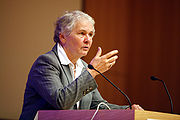 |
Christiane Nüsslein-Volhard Christiane Nüsslein-Volhard Christiane Nüsslein-Volhard is a German biologist who won the Albert Lasker Award for Basic Medical Research in 1991 and the Nobel Prize in Physiology or Medicine in 1995, together with Eric Wieschaus and Edward B... |
Federal Republic of Germany | ||
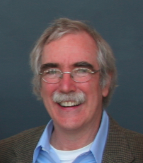 |
Eric F. Wieschaus Eric F. Wieschaus -External links:***, excellent profile**... |
United States | ||
| 1996 | Peter C. Doherty | Australia | "for their discoveries concerning the specificity of the cell mediated immune defence Major histocompatibility complex Major histocompatibility complex is a cell surface molecule encoded by a large gene family in all vertebrates. MHC molecules mediate interactions of leukocytes, also called white blood cells , which are immune cells, with other leukocytes or body cells... " |
|
| Rolf M. Zinkernagel Rolf M. Zinkernagel Rolf Martin Zinkernagel AC is Professor of Experimental Immunology at the University of Zurich.-Career:... |
Switzerland | |||
| 1997 | Stanley B. Prusiner Stanley B. Prusiner Stanley Ben Prusiner is an American neurologist and biochemist. Currently the director of the Institute for Neurodegenerative Diseases at University of California, San Francisco . Prusiner discovered prions, a class of infectious self-reproducing pathogens primarily or solely composed of protein... |
United States | "for his discovery of Prion Prion A prion is an infectious agent composed of protein in a misfolded form. This is in contrast to all other known infectious agents which must contain nucleic acids . The word prion, coined in 1982 by Stanley B. Prusiner, is a portmanteau derived from the words protein and infection... s - a new biological principle of infection" |
|
| 1998 | Robert F. Furchgott Robert F. Furchgott Robert Francis Furchgott was a Nobel Prize-winning American biochemist.Furchgott was born in Charleston, SC, to Arthur Furchgott and Pena Sorentrue Furchgott... |
United States | "for their discoveries concerning nitric oxide Nitric oxide Nitric oxide, also known as nitrogen monoxide, is a diatomic molecule with chemical formula NO. It is a free radical and is an important intermediate in the chemical industry... as a signalling molecule in the cardiovascular system" |
|
| Louis J. Ignarro | United States | |||
 |
Ferid Murad Ferid Murad Ferid Murad is an Albanian-American physician and pharmacologist, and a co-winner of the 1998 Nobel Prize in Physiology or Medicine. He is also an honorary member of the Academy of Sciences and Arts of Kosovo.- Life :... |
United States | ||
| 1999 | 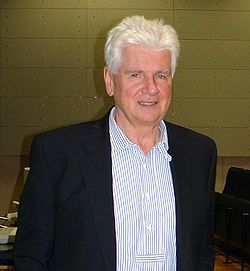 |
Günter Blobel Günter Blobel -Biography:Blobel was born in Waltersdorf in the Prussian Province of Lower Silesia. In January 1945 his family fled from native Silesia from the advancing Red Army. On their way to the West they passed through the beautiful old city of Dresden, which left deep impressions in the young boy... |
United States | "for the discovery that protein Protein Proteins are biochemical compounds consisting of one or more polypeptides typically folded into a globular or fibrous form, facilitating a biological function. A polypeptide is a single linear polymer chain of amino acids bonded together by peptide bonds between the carboxyl and amino groups of... s have intrinsic signals that govern their transport and localization in the cell" |
| 2000 | Arvid Carlsson Arvid Carlsson Arvid Carlsson is a Swedish scientist who is best known for his work with the neurotransmitter dopamine and its effects in Parkinson's disease... |
Sweden | "for their discoveries concerning signal transduction Signal transduction Signal transduction occurs when an extracellular signaling molecule activates a cell surface receptor. In turn, this receptor alters intracellular molecules creating a response... in the nervous system Nervous system The nervous system is an organ system containing a network of specialized cells called neurons that coordinate the actions of an animal and transmit signals between different parts of its body. In most animals the nervous system consists of two parts, central and peripheral. The central nervous... " |
|
| Paul Greengard Paul Greengard Paul Greengard is an American neuroscientist best known for his work on the molecular and cellular function of neurons. In 2000, Greengard, Arvid Carlsson and Eric Kandel were awarded the Nobel Prize for Physiology or Medicine for their discoveries concerning signal transduction in the nervous... |
United States | |||
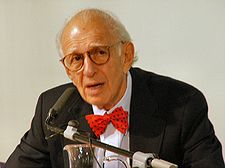 |
Eric R. Kandel | United States | ||
| 2001 | Leland H. Hartwell Leland H. Hartwell Leland Harrison Hartwell is former president and director of the Fred Hutchinson Cancer Research Center in Seattle, Washington. He shared the 2001 Nobel Prize in Physiology or Medicine with Paul Nurse and R... |
United States | "for their discoveries of key regulators of the cell cycle Cell cycle The cell cycle, or cell-division cycle, is the series of events that takes place in a cell leading to its division and duplication . In cells without a nucleus , the cell cycle occurs via a process termed binary fission... " |
|
 |
Sir Tim Hunt Tim Hunt Sir Richard Timothy "Tim" Hunt, FRS is an English biochemist.Hunt was awarded the 2001 Nobel Prize in Physiology or Medicine with Paul Nurse and Leland H... |
United Kingdom | ||
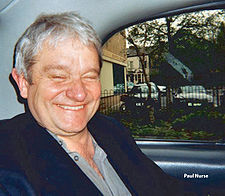 |
Sir Paul M. Nurse Paul Nurse Sir Paul Maxime Nurse, PRS is a British geneticist and cell biologist. He was awarded the 2001 Nobel Prize in Physiology or Medicine with Leland H. Hartwell and R... |
United Kingdom | ||
| 2002 | Sydney Brenner Sydney Brenner Sydney Brenner, CH FRS is a South African biologist and a 2002 Nobel prize in Physiology or Medicine laureate, shared with H... |
United Kingdom | "for their discoveries concerning 'genetic regulation of organ development and programmed cell death Apoptosis Apoptosis is the process of programmed cell death that may occur in multicellular organisms. Biochemical events lead to characteristic cell changes and death. These changes include blebbing, cell shrinkage, nuclear fragmentation, chromatin condensation, and chromosomal DNA fragmentation... '" |
|
| H. Robert Horvitz H. Robert Horvitz Howard Robert Horvitz is an American biologist best known for his research on the nematode worm Caenorhabditis elegans.-Life:Horvitz did his undergraduate studies at MIT in 1968, where he joined Alpha Epsilon Pi... |
United States | |||
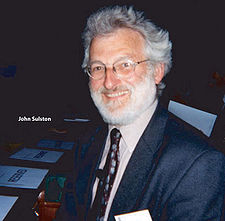 |
Sir John E. Sulston John E. Sulston Sir John Edward Sulston FRS is a British biologist. He is a joint winner of the 2002 Nobel Prize in Physiology or Medicine.He is currently Chair of the Institute for Science, Ethics and Innovation at the University of Manchester.... |
United Kingdom | ||
| 2003 | Paul Lauterbur Paul Lauterbur Paul Christian Lauterbur was an American chemist who shared the Nobel Prize in Physiology or Medicine in 2003 with Peter Mansfield for his work which made the development of magnetic resonance imaging possible.Dr... |
United States | "for their discoveries concerning magnetic resonance imaging Magnetic resonance imaging Magnetic resonance imaging , nuclear magnetic resonance imaging , or magnetic resonance tomography is a medical imaging technique used in radiology to visualize detailed internal structures... " |
|
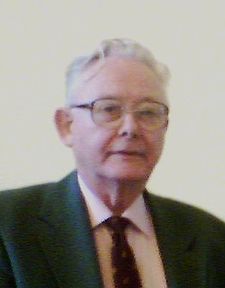 |
Sir Peter Mansfield Peter Mansfield Sir Peter Mansfield, FRS, , is a British physicist who was awarded the 2003 Nobel Prize in Physiology or Medicine for his discoveries concerning magnetic resonance imaging . The Nobel Prize was shared with Paul Lauterbur, who also contributed to the development of MRI... |
United Kingdom | ||
| 2004 | Richard Axel Richard Axel Richard Axel is an American neuroscientist whose work on the olfactory system won him and Linda B. Buck, a former post-doctoral scientist in his research group, the Nobel Prize in Physiology or Medicine in 2004.... |
United States | "for their discoveries of odorant receptors and the organization of the olfactory system Olfactory system The olfactory system is the sensory system used for olfaction, or the sense of smell. Most mammals and reptiles have two distinct parts to their olfactory system: a main olfactory system and an accessory olfactory system. The main olfactory system detects volatile, airborne substances, while the... " |
|
 |
Linda B. Buck Linda B. Buck Linda Brown Buck is an American biologist best known for her work on the olfactory system. She was awarded the 2004 Nobel Prize in Physiology or Medicine, along with Richard Axel, for their work on olfactory receptors.... |
United States | ||
| 2005 | Barry J. Marshall Barry Marshall Barry James Marshall, AC, FRS, FAA is an Australian physician, Nobel Prize laureate in Physiology or Medicine, and Professor of Clinical Microbiology at the University of Western Australia. Marshall is well-known for proving that the bacterium Helicobacter pylori Barry James Marshall, AC, FRS, FAA... |
Australia | "for their discovery of the bacterium Helicobacter pylori Helicobacter pylori Helicobacter pylori , previously named Campylobacter pyloridis, is a Gram-negative, microaerophilic bacterium found in the stomach. It was identified in 1982 by Barry Marshall and Robin Warren, who found that it was present in patients with chronic gastritis and gastric ulcers, conditions that were... and its role in gastritis Gastritis Gastritis is an inflammation of the lining of the stomach, and has many possible causes. The main acute causes are excessive alcohol consumption or prolonged use of nonsteroidal anti-inflammatory drugs such as aspirin or ibuprofen. Sometimes gastritis develops after major surgery, traumatic... and peptic ulcer disease" |
|
| J. Robin Warren Robin Warren John Robin Warren AC is an Australian pathologist, Nobel Laureate and researcher who is credited with the 1979 re-discovery of the bacterium Helicobacter pylori, together with Barry Marshall.- Life and career :... |
Australia | |||
| 2006 |  |
Andrew Z. Fire Andrew Fire Andrew Zachary Fire is an American biologist and professor of pathology and of genetics at the Stanford University School of Medicine. He was awarded the 2006 Nobel Prize for Physiology or Medicine, along with Craig C. Mello, for the discovery of RNA interference... |
United States | "for their discovery of RNA interference RNA interference RNA interference is a process within living cells that moderates the activity of their genes. Historically, it was known by other names, including co-suppression, post transcriptional gene silencing , and quelling. Only after these apparently unrelated processes were fully understood did it become... - gene silencing by double-stranded RNA" |
| Craig C. Mello Craig Mello Craig Cameron Mello is a Portuguese-American biologist and Professor of Molecular Medicine at the University of Massachusetts Medical School in Worcester, Massachusetts. He was awarded the 2006 Nobel Prize for Physiology or Medicine, along with Andrew Z. Fire, for the discovery of RNA interference... |
United States | |||
| 2007 |  |
Mario R. Capecchi Mario Capecchi Mario Renato Capecchi is an Italian-born American molecular geneticist and a co-winner of the 2007 Nobel Prize in Physiology or Medicine for discovering a method for introducing homologous recombination in mice employing embryonic stem cells, with Martin Evans and Oliver Smithies... |
United States | "for their discoveries of principles for introducing specific gene modifications in mice by the use of embryonic stem cell Embryonic stem cell Embryonic stem cells are pluripotent stem cells derived from the inner cell mass of the blastocyst, an early-stage embryo. Human embryos reach the blastocyst stage 4–5 days post fertilization, at which time they consist of 50–150 cells... s." |
 |
Sir Martin J. Evans Martin Evans Sir Martin John Evans FRS is a British scientist who, with Matthew Kaufman, was the first to culture mice embryonic stem cells and cultivate them in a laboratory in 1981... |
United Kingdom | ||
| Oliver Smithies Oliver Smithies Oliver Smithies is a British-born American geneticist and Nobel laureate, credited with the invention of gel electrophoresis in 1955, and the simultaneous discovery, with Mario Capecchi and Martin Evans, of the technique of homologous recombination of transgenic DNA with genomic DNA, a much more... |
United States | |||
| 2008 |  |
Harald zur Hausen Harald zur Hausen Harald zur Hausen is a German virologist and professor emeritus. He has done research on cancer of the cervix, where he discovered the role of papilloma viruses, for which he received the Nobel Prize in Physiology or Medicine 2008.-Biography:Zur Hausen was born in Gelsenkirchen, Germany, went to... |
Germany | "for his discovery of human papilloma viruses causing cervical cancer Cervical cancer Cervical cancer is malignant neoplasm of the cervix uteri or cervical area. One of the most common symptoms is abnormal vaginal bleeding, but in some cases there may be no obvious symptoms until the cancer is in its advanced stages... " |
 |
Françoise Barré-Sinoussi Françoise Barré-Sinoussi Françoise Barré-Sinoussi is a French virologist and director of the Unité de Régulation des Infections Rétrovirales at the Institut Pasteur in Paris, France. Born in Paris, France, Barré-Sinoussi performed some of the fundamental work in the identification of the human immunodeficiency virus as... |
France | "for their discovery of human immunodeficiency virus" | |
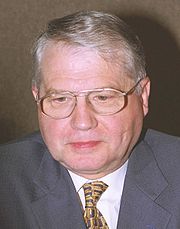 |
Luc Montagnier Luc Montagnier Luc Antoine Montagnier is a French virologist and joint recipient with Françoise Barré-Sinoussi and Harald zur Hausen of the 2008 Nobel Prize in Physiology or Medicine, for his discovery of the human immunodeficiency virus... |
France | ||
| 2009 | 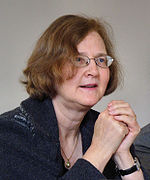 |
Elizabeth H. Blackburn | United States Australia |
"for the discovery of how chromosome Chromosome A chromosome is an organized structure of DNA and protein found in cells. It is a single piece of coiled DNA containing many genes, regulatory elements and other nucleotide sequences. Chromosomes also contain DNA-bound proteins, which serve to package the DNA and control its functions.Chromosomes... s are protected by telomere Telomere A telomere is a region of repetitive DNA sequences at the end of a chromosome, which protects the end of the chromosome from deterioration or from fusion with neighboring chromosomes. Its name is derived from the Greek nouns telos "end" and merοs "part"... s and the enzyme Enzyme Enzymes are proteins that catalyze chemical reactions. In enzymatic reactions, the molecules at the beginning of the process, called substrates, are converted into different molecules, called products. Almost all chemical reactions in a biological cell need enzymes in order to occur at rates... telomerase Telomerase Telomerase is an enzyme that adds DNA sequence repeats to the 3' end of DNA strands in the telomere regions, which are found at the ends of eukaryotic chromosomes. This region of repeated nucleotide called telomeres contains non-coding DNA material and prevents constant loss of important DNA from... " |
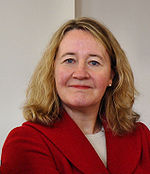 |
Carol W. Greider Carol W. Greider Carolyn Widney "Carol" Greider is an American molecular biologist. She is Daniel Nathans Professor and Director of Molecular Biology and Genetics at Johns Hopkins University. She discovered the enzyme telomerase in 1984, when she was a graduate student of Elizabeth Blackburn at the University of... |
United States | ||
 |
Jack W. Szostak Jack W. Szostak Jack William Szostak is a Canadian American biologist of Polish British descent and Professor of Genetics at Harvard Medical School and Alexander Rich Distinguished Investigator at Massachusetts General Hospital, Boston. He was awarded the 2009 Nobel Prize for Physiology or Medicine, along with... |
United States | ||
| 2010 | Sir Robert G. Edwards | United Kingdom | "for the development of in vitro fertilization" | |
| 2011 | ||||
| Bruce A. Beutler | United States | "for their discoveries concerning the activation of innate immunity Adaptive immune system The adaptive immune system is composed of highly specialized, systemic cells and processes that eliminate or prevent pathogenic growth. Thought to have arisen in the first jawed vertebrates, the adaptive or "specific" immune system is activated by the “non-specific” and evolutionarily older innate... " |
||
| Jules A. Hoffmann Jules A. Hoffmann Jules A. Hoffmann is a Luxembourgish-born French biologist. He is a research director and member of the board of administrators of the National Center of Scientific Research in Strasbourg, France. In 2007, he became President of the French Academy of Sciences... |
France | |||
| Ralph M. Steinman Ralph M. Steinman Ralph Marvin Steinman was a Canadian immunologist and cell biologist at Rockefeller University, who in 1973 coined the term dendritic cells while working as a postdoc in the lab of Zanvil A. Cohn, also at Rockefeller University.... |
Canada United States |
"for his discovery of the dendritic cell Dendritic cell Dendritic cells are immune cells forming part of the mammalian immune system. Their main function is to process antigen material and present it on the surface to other cells of the immune system. That is, dendritic cells function as antigen-presenting cells... and its role in adaptive immunity" (awarded posthumously) |
||

